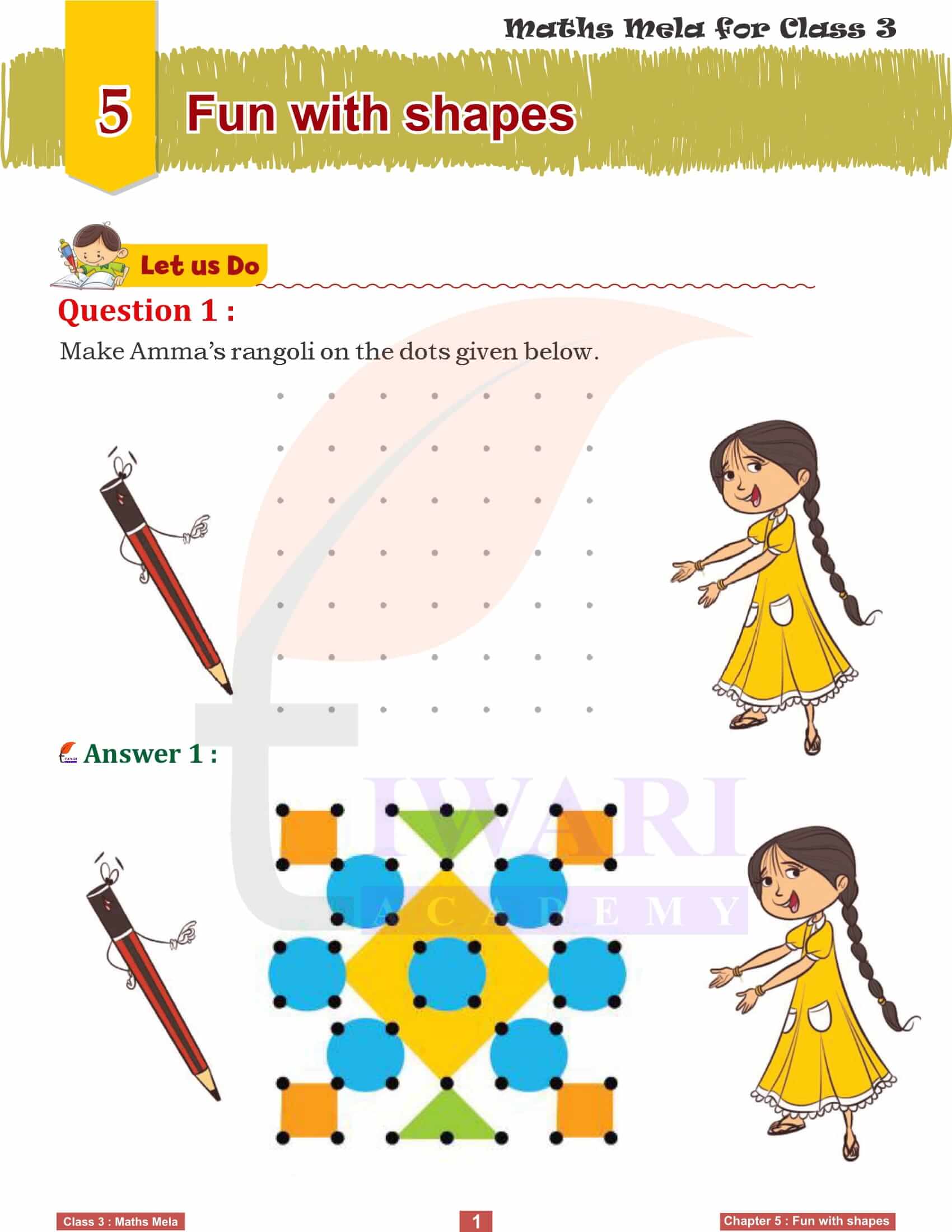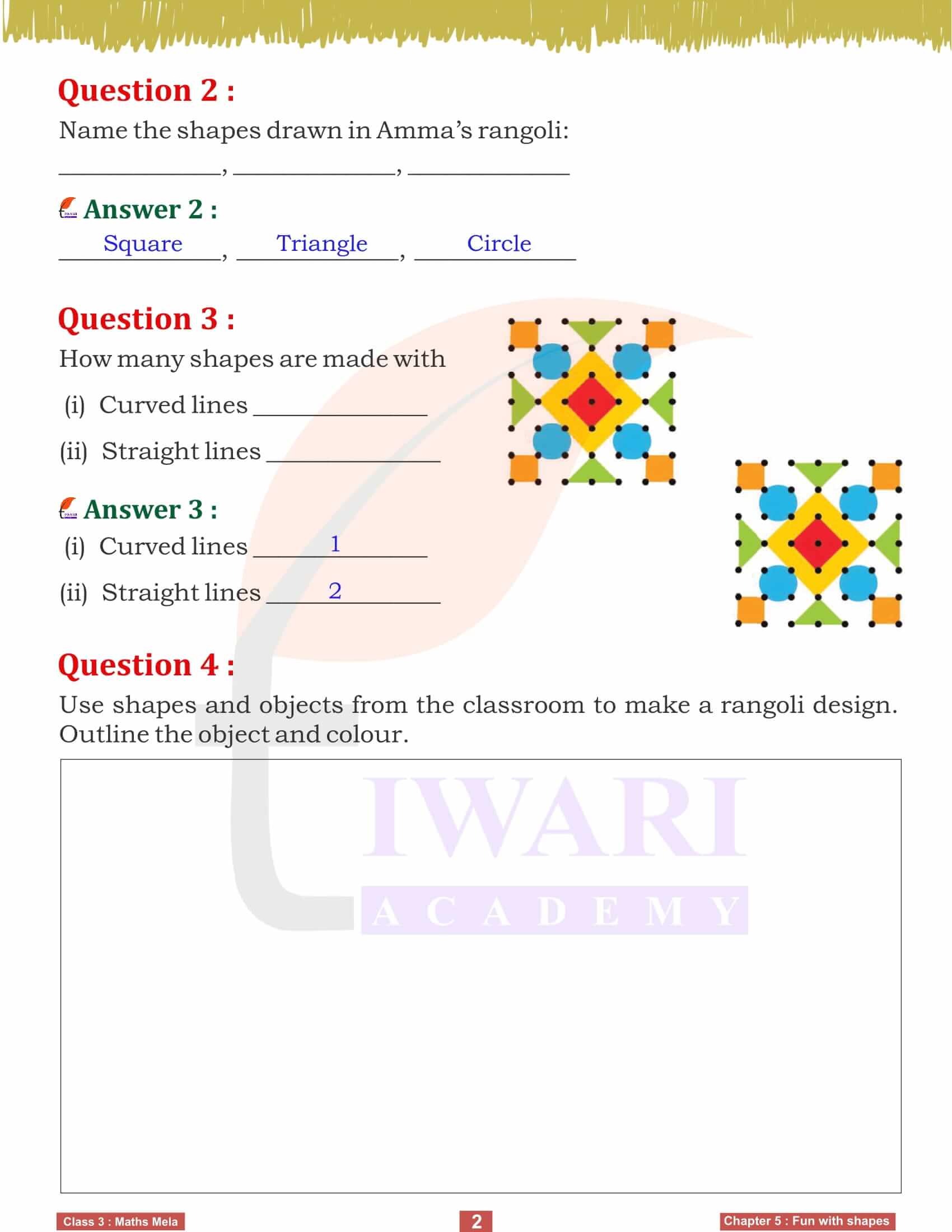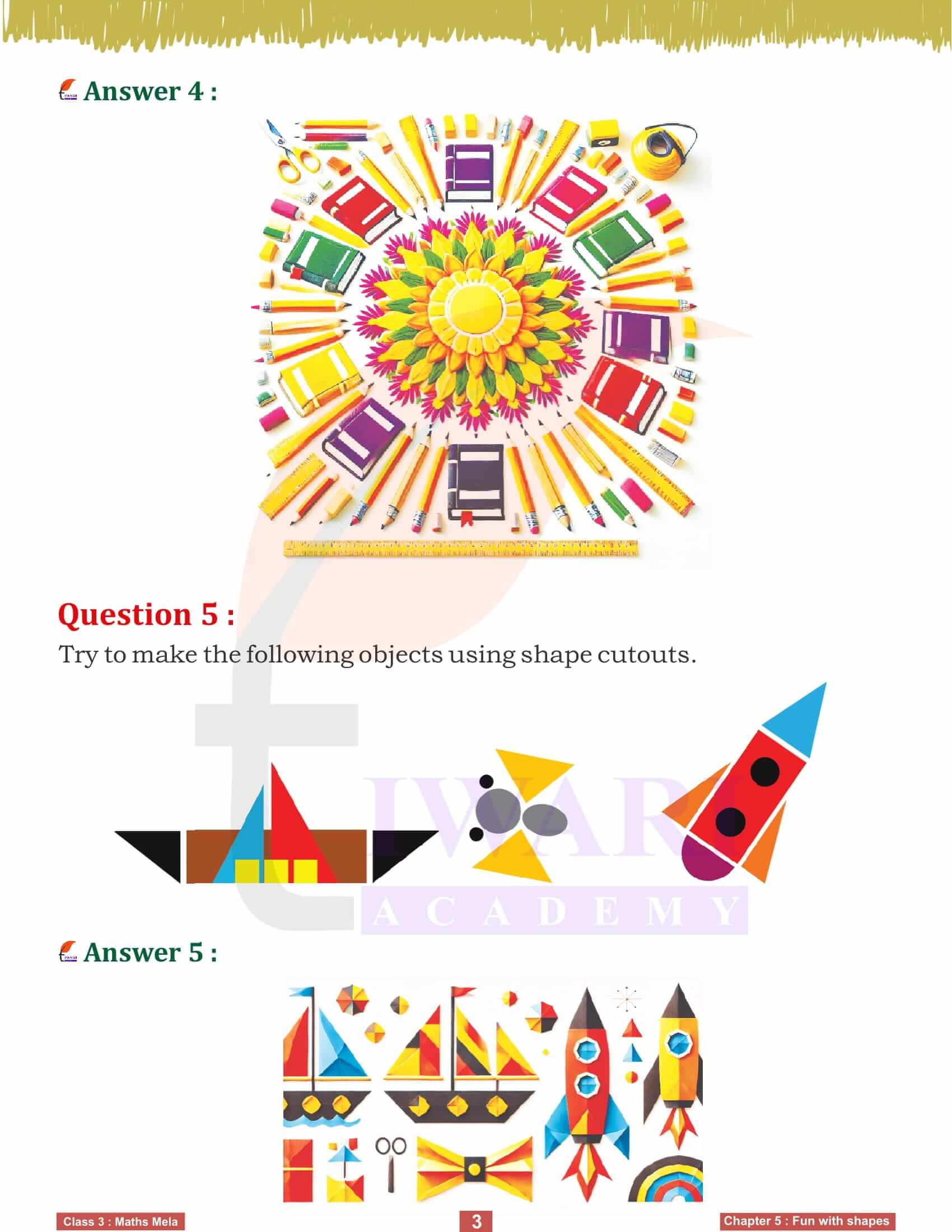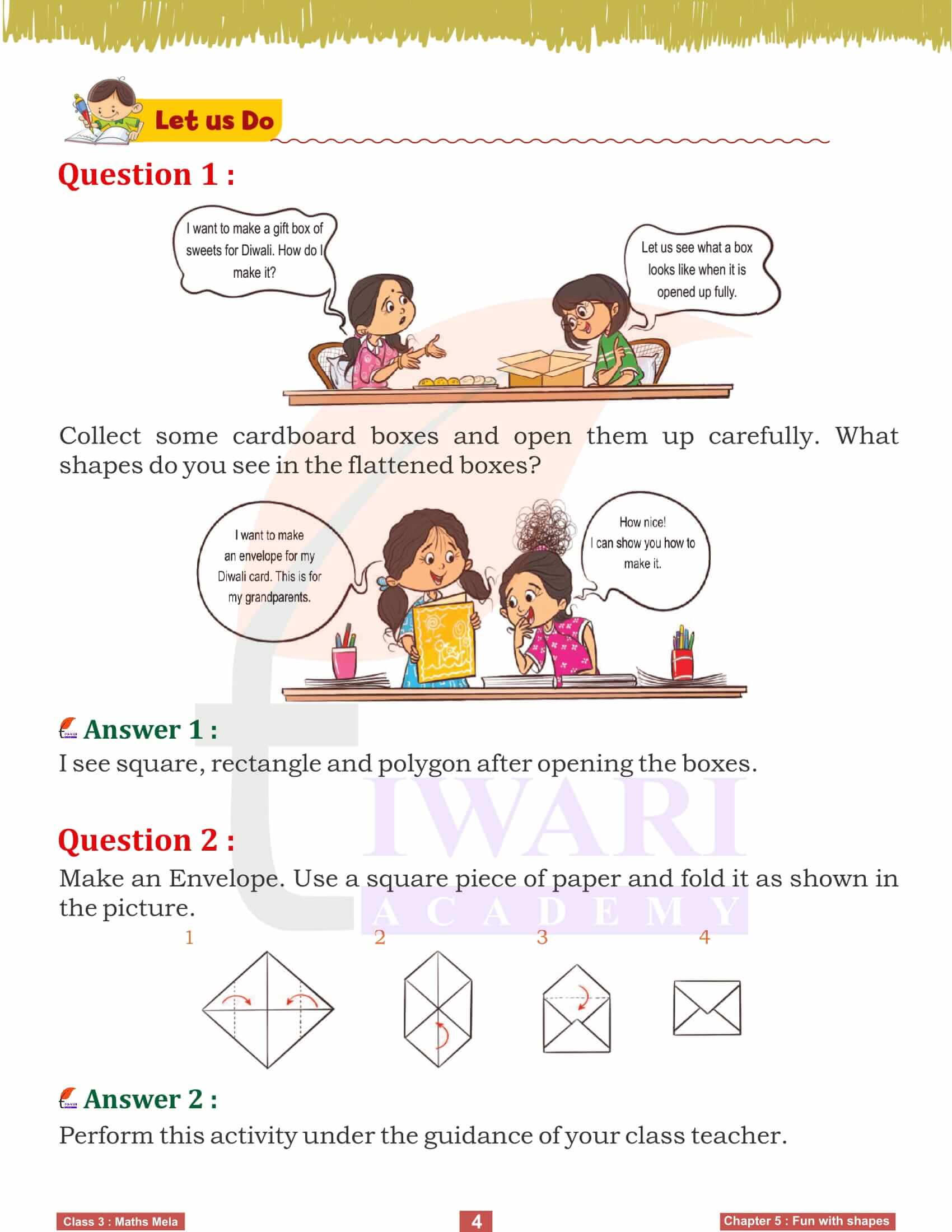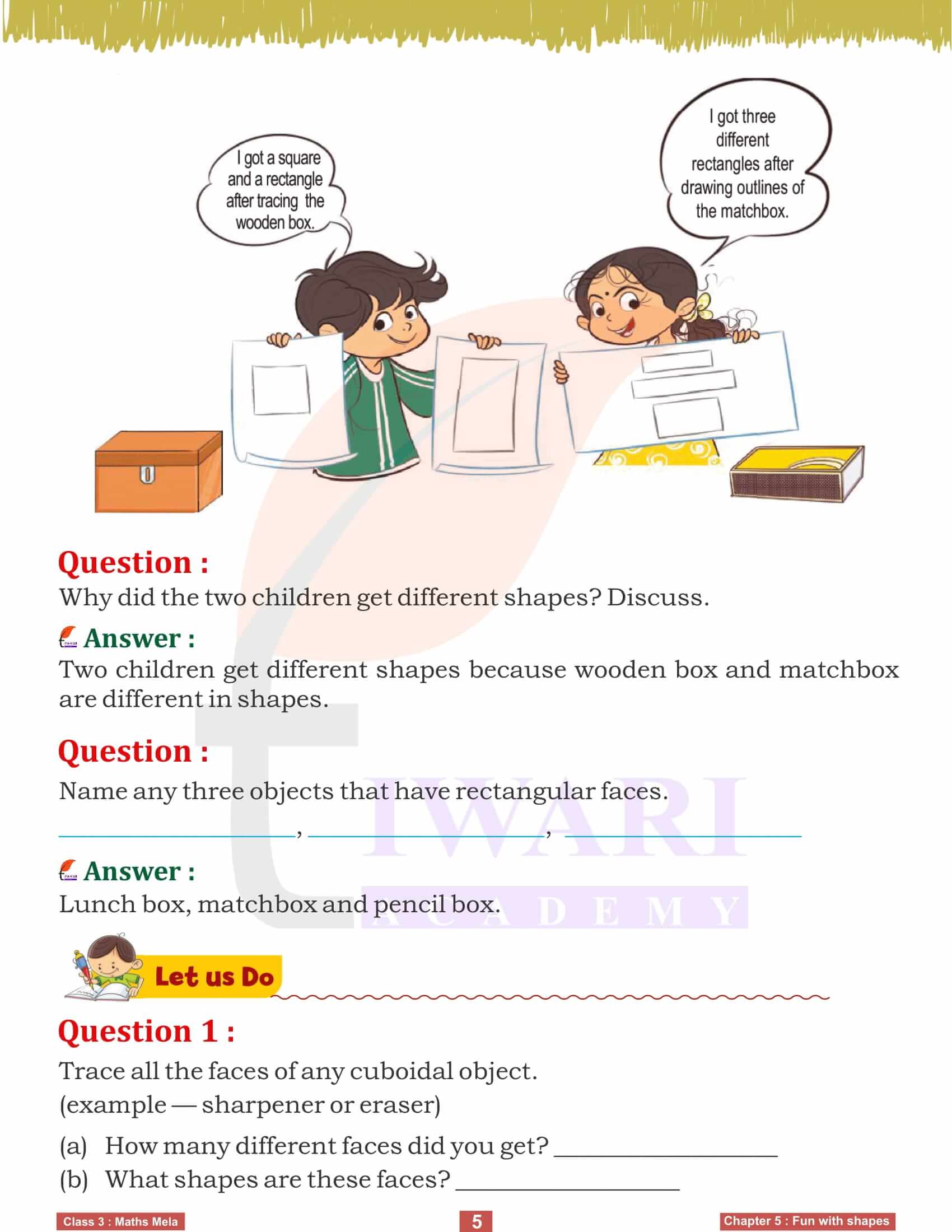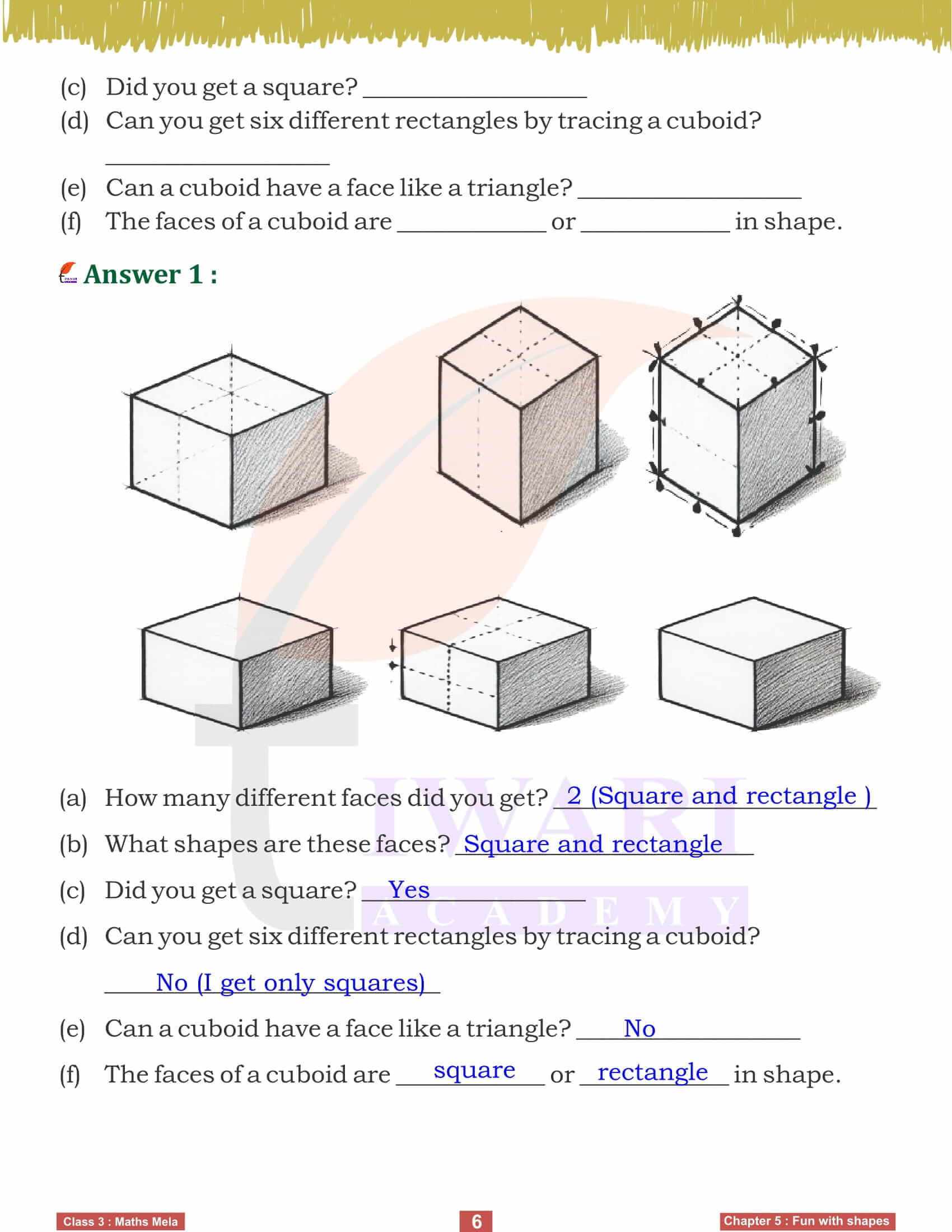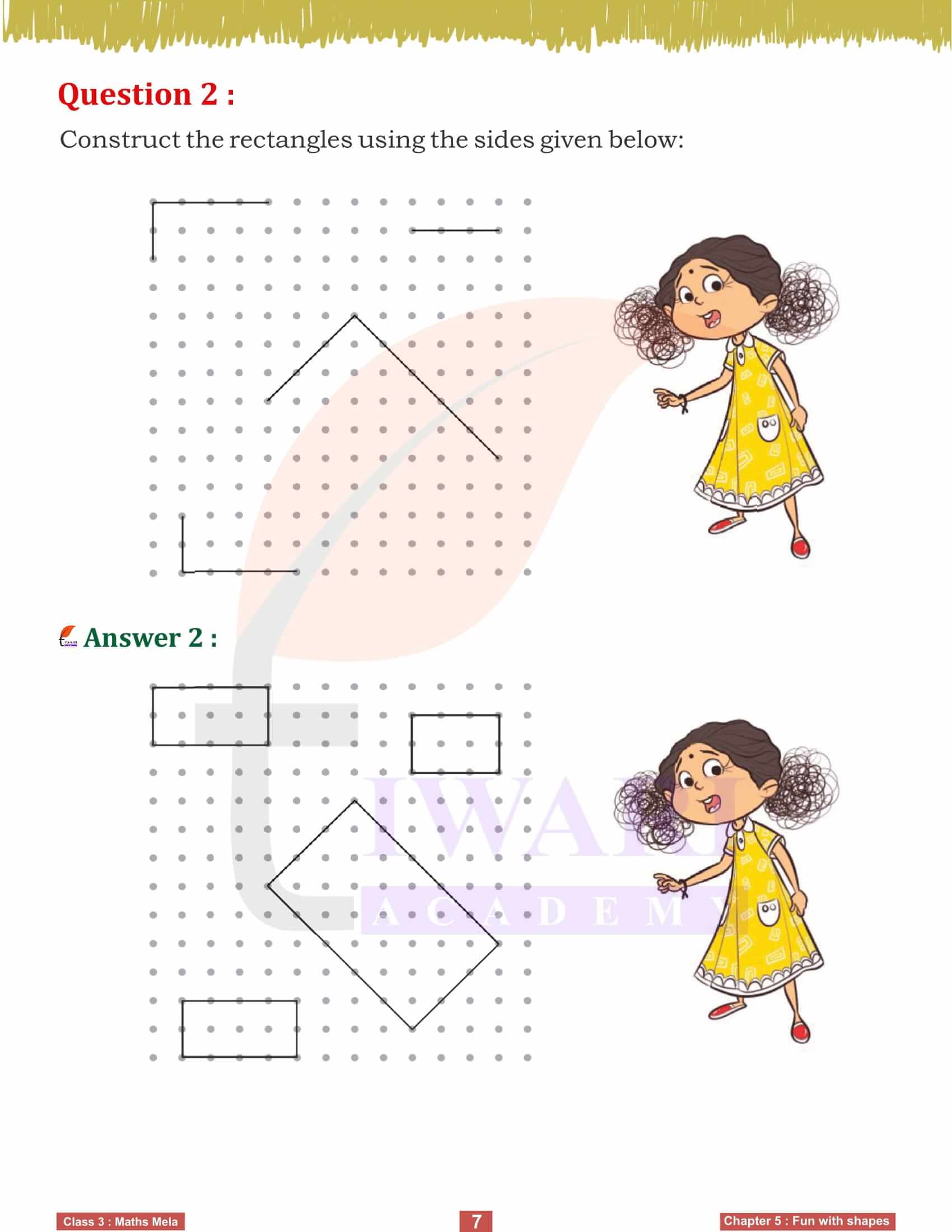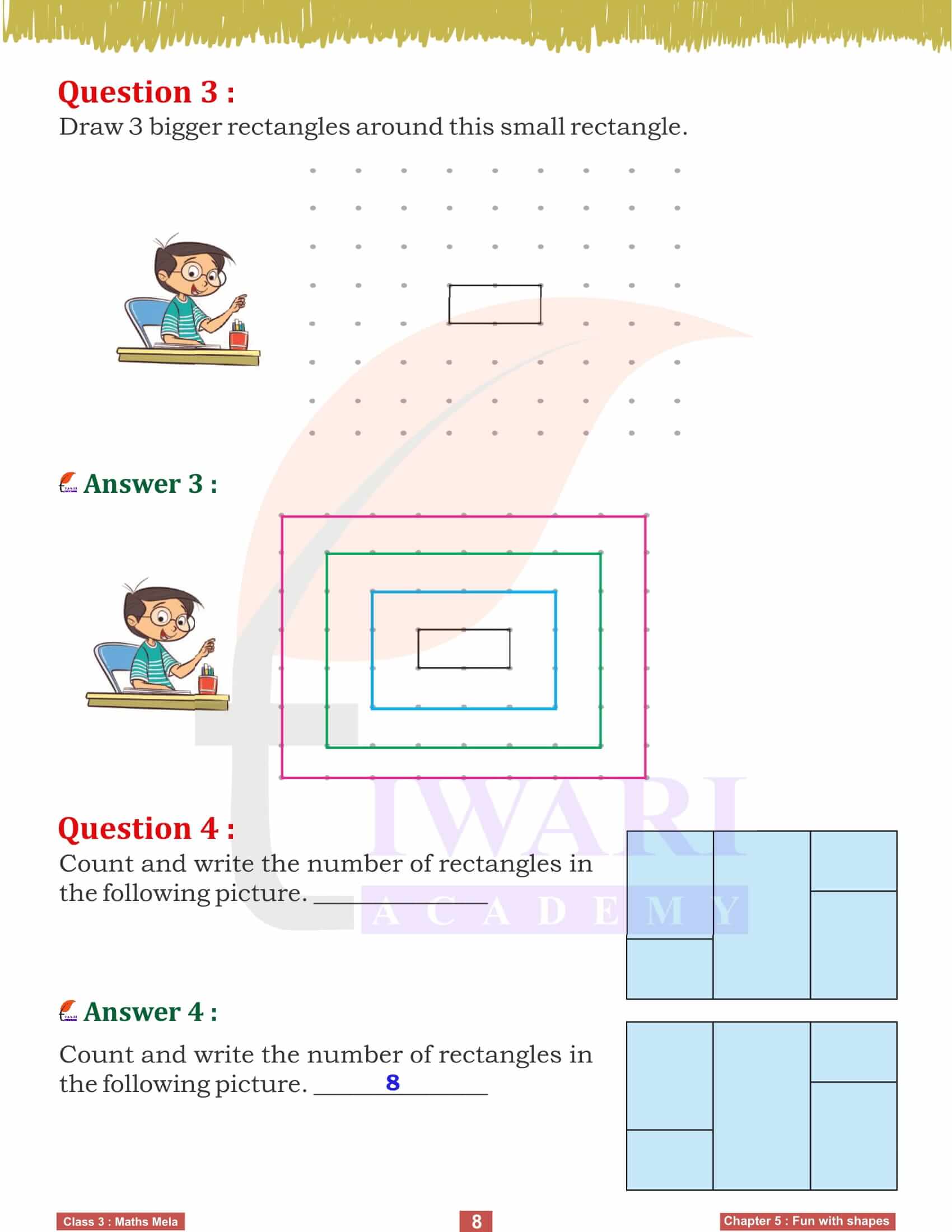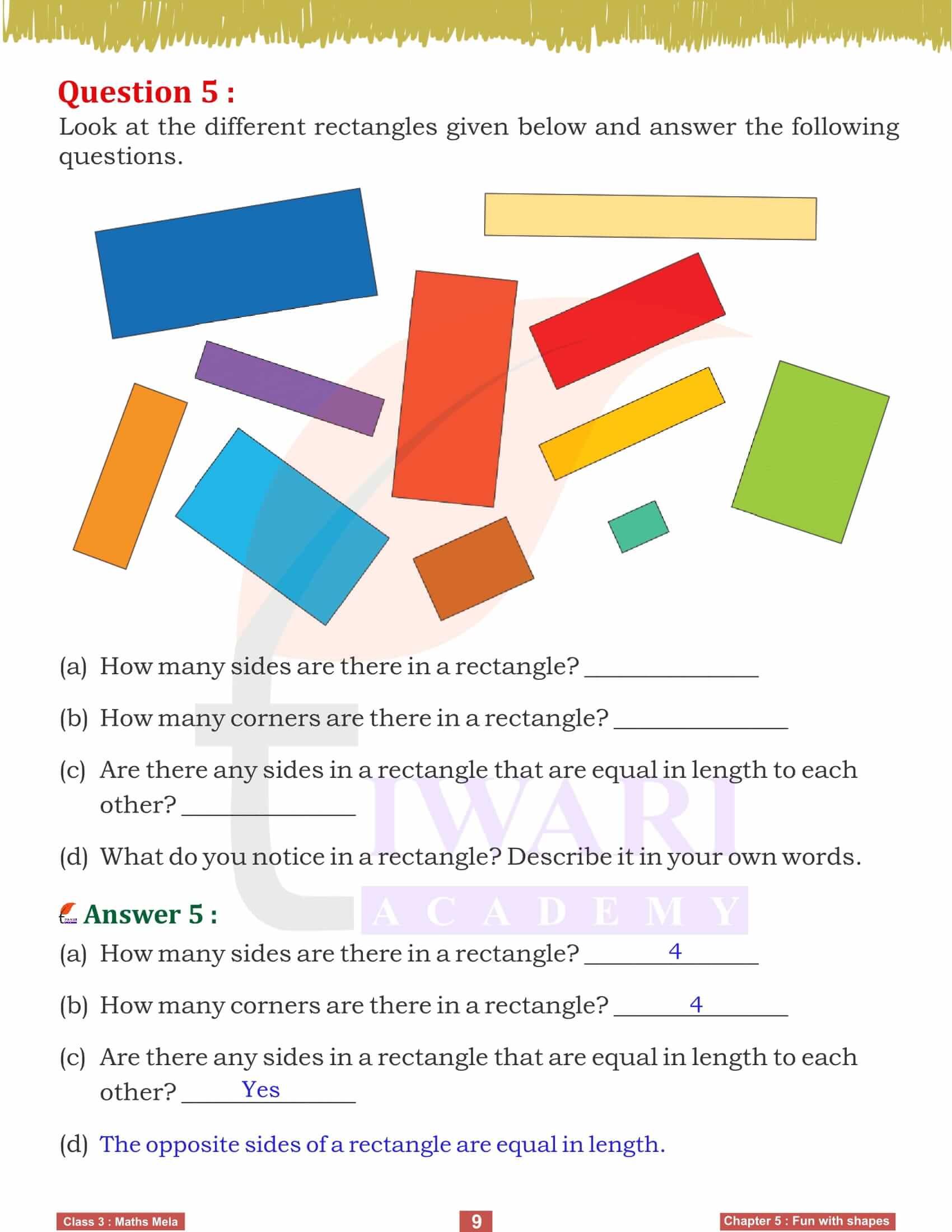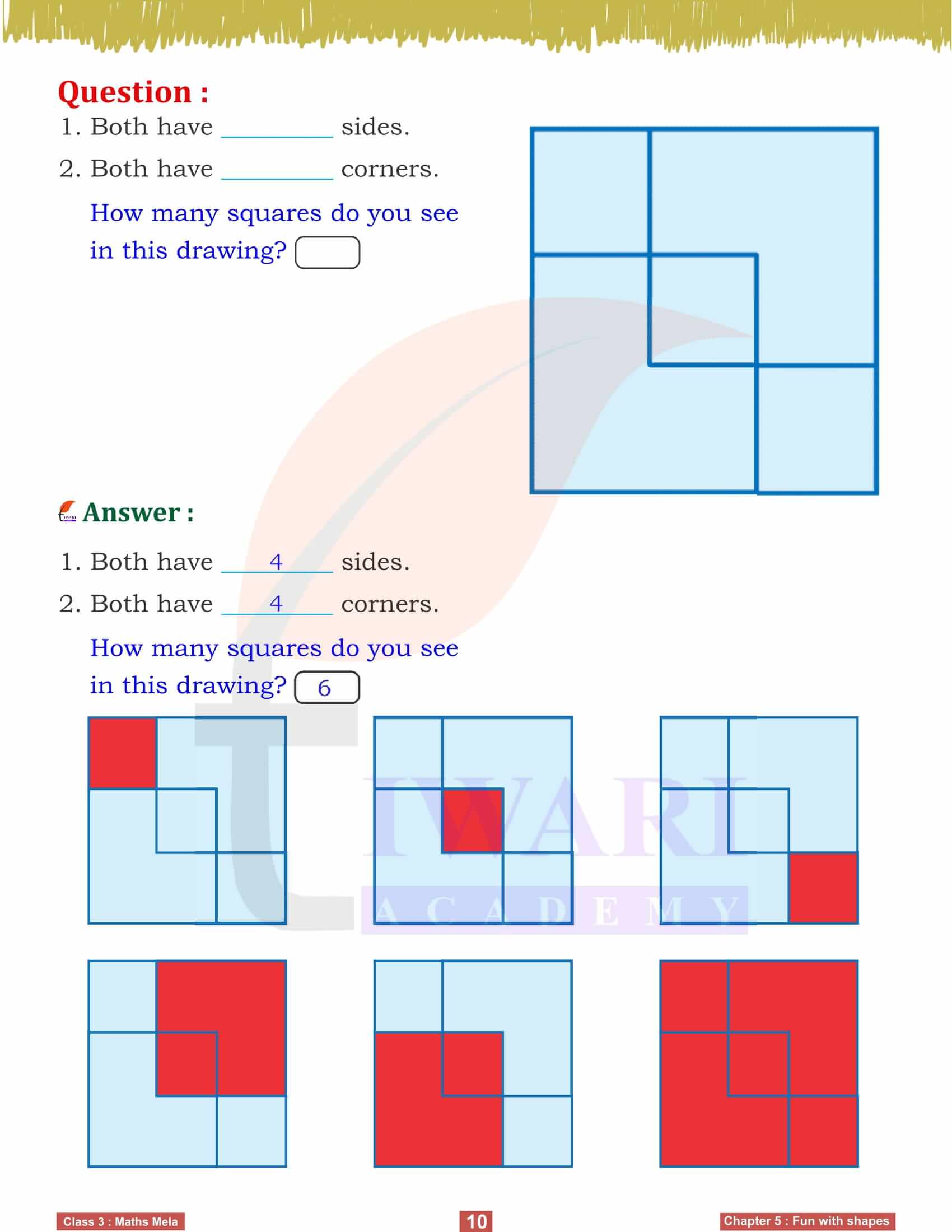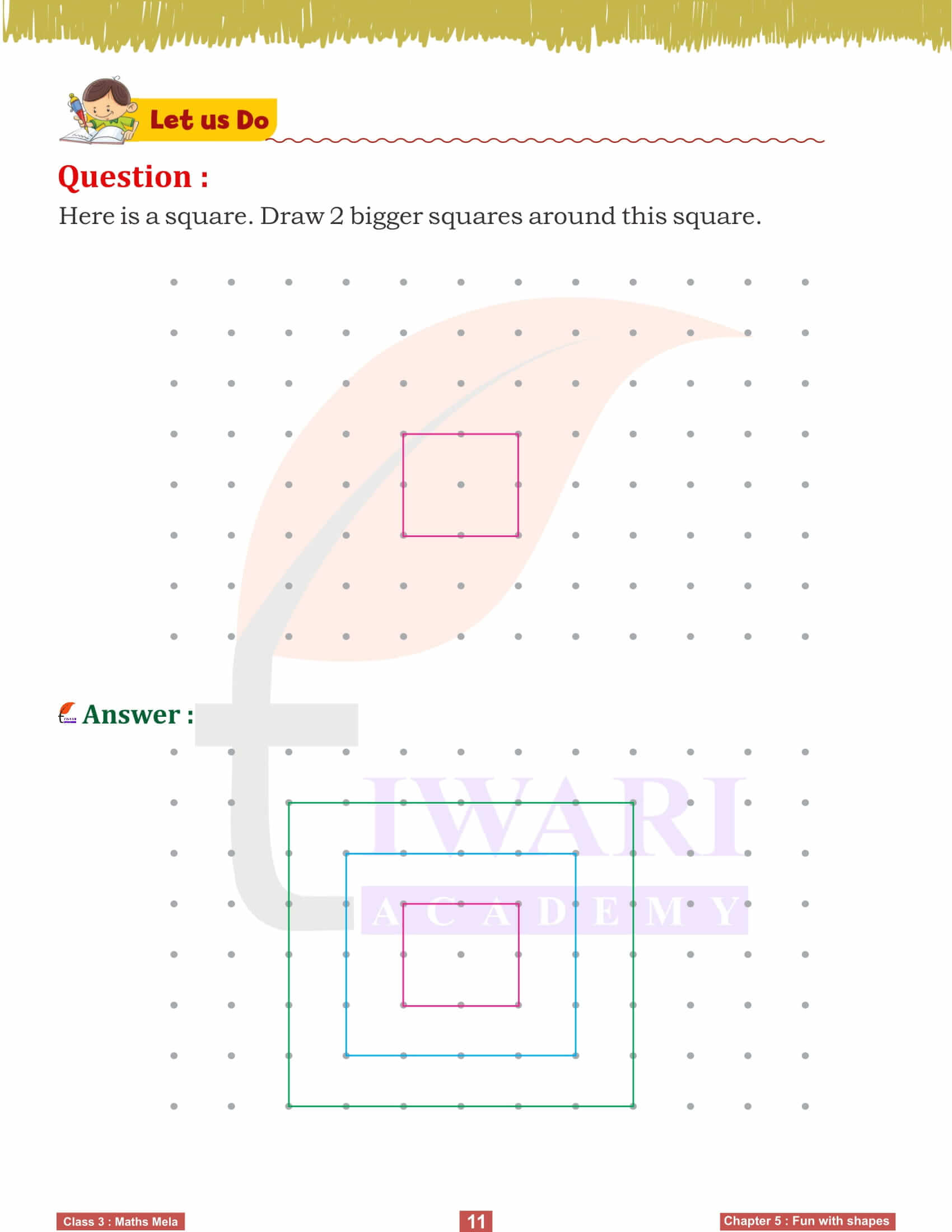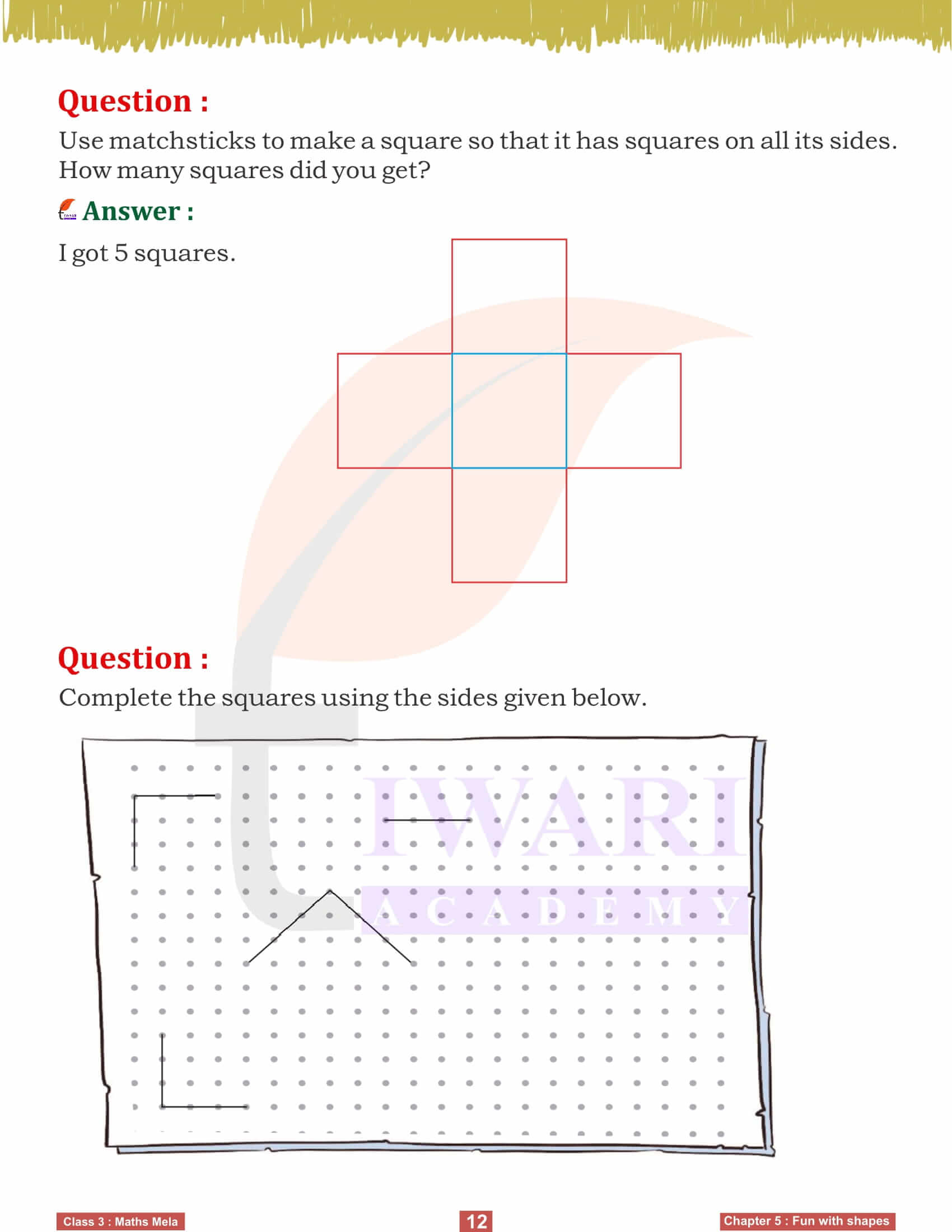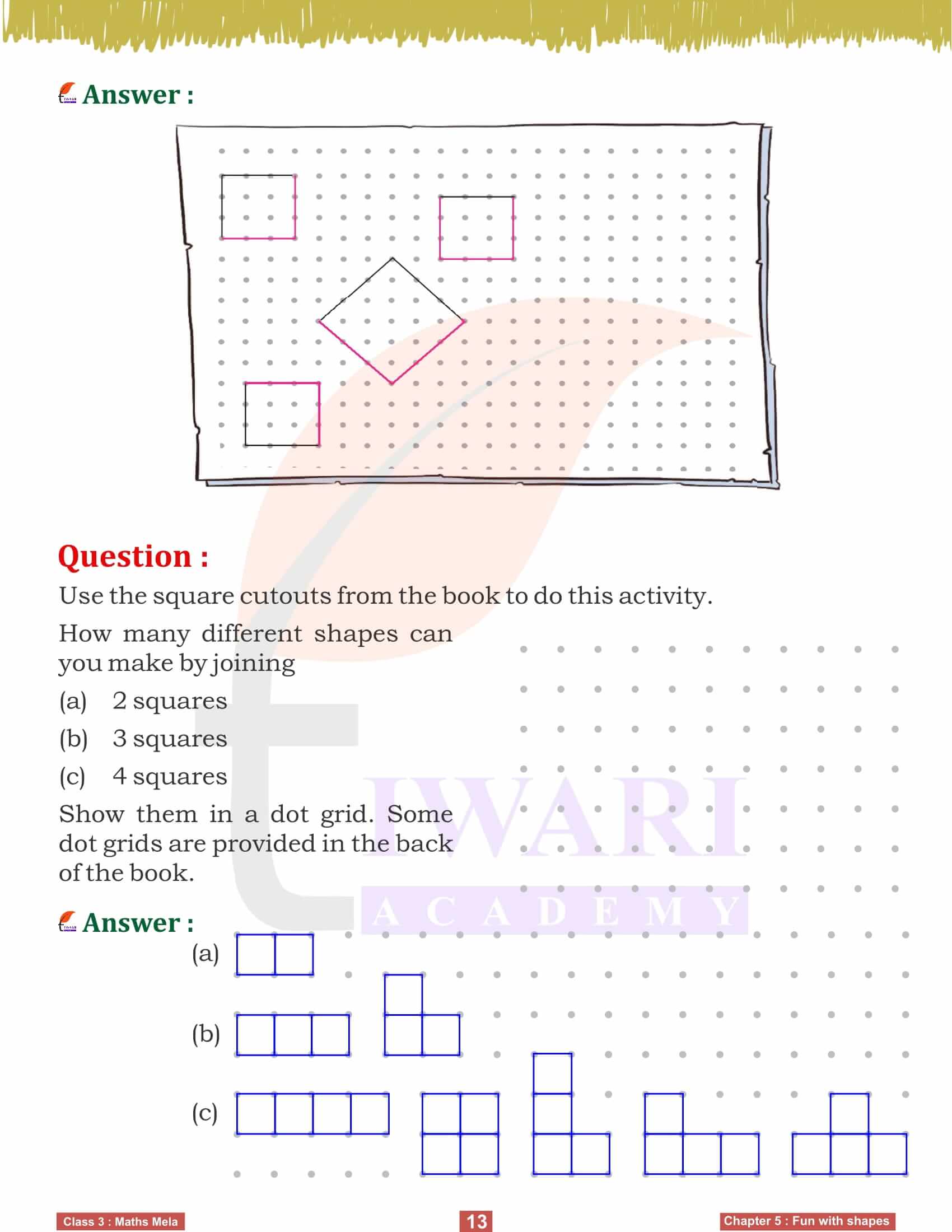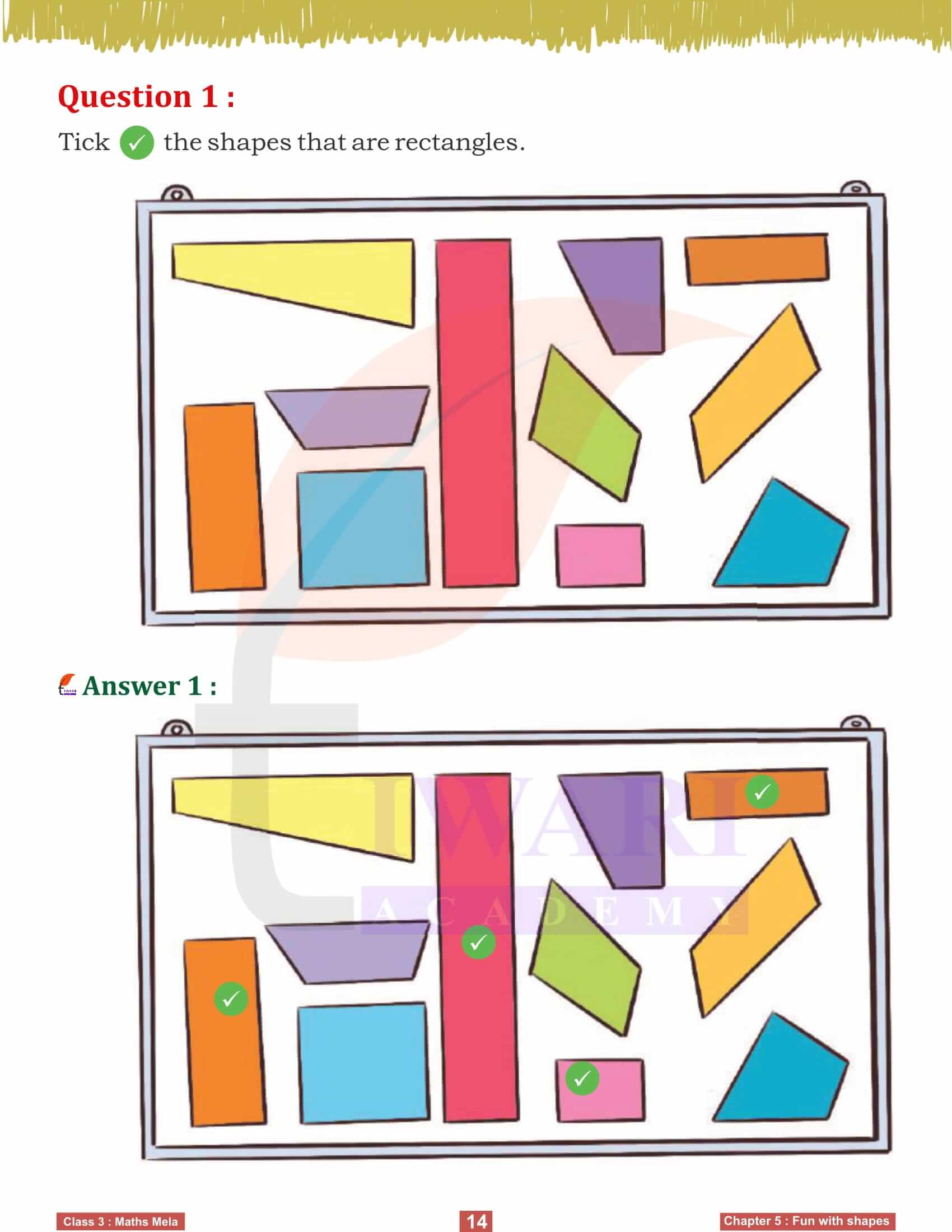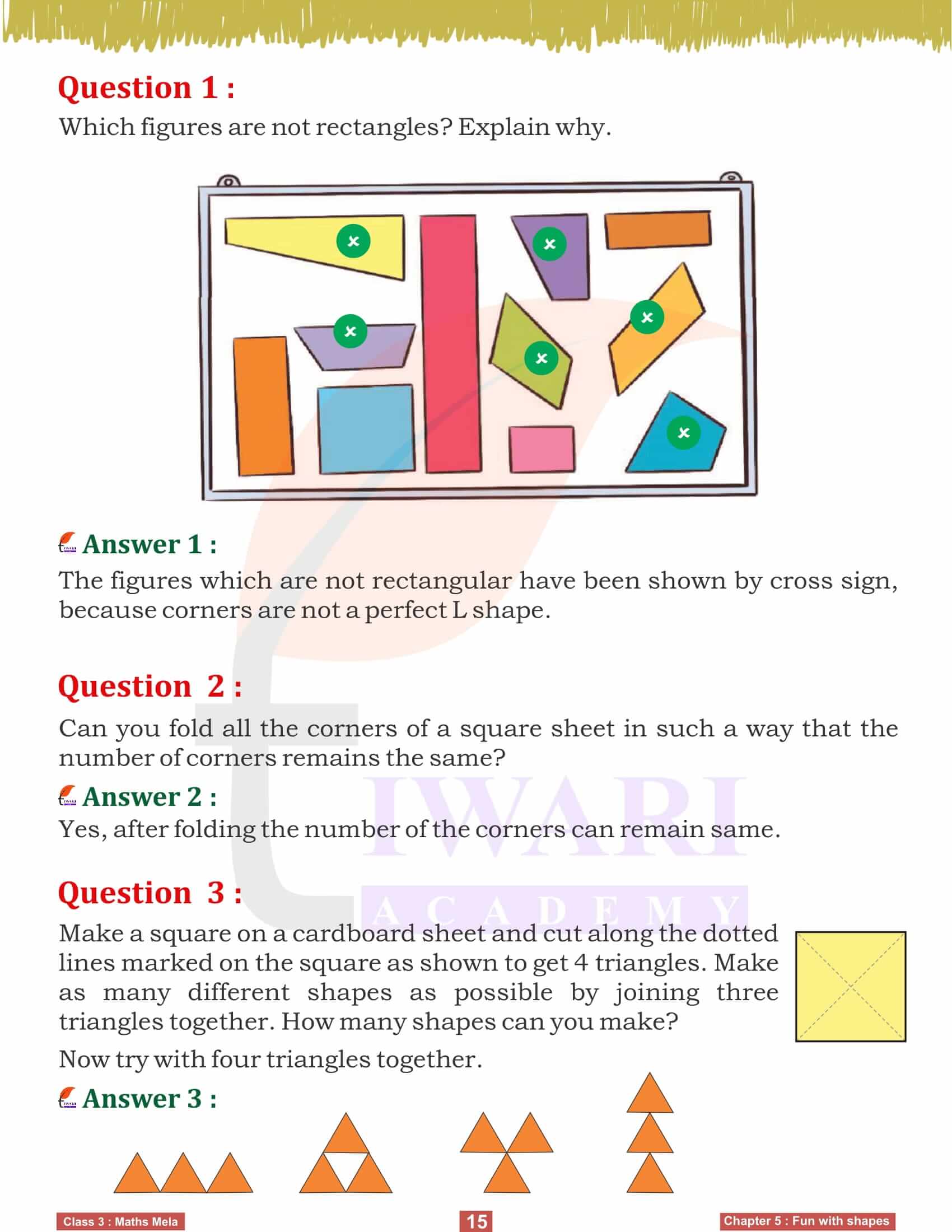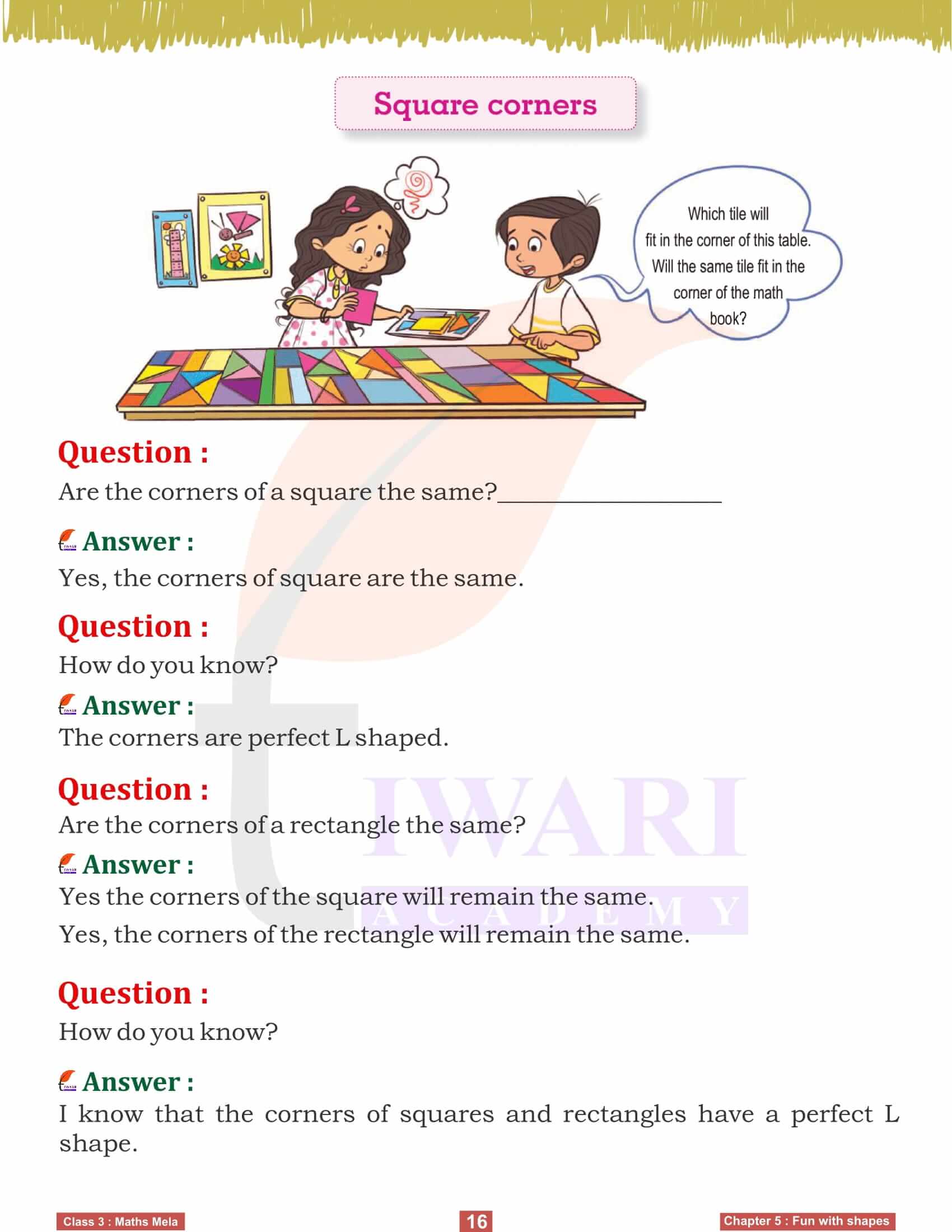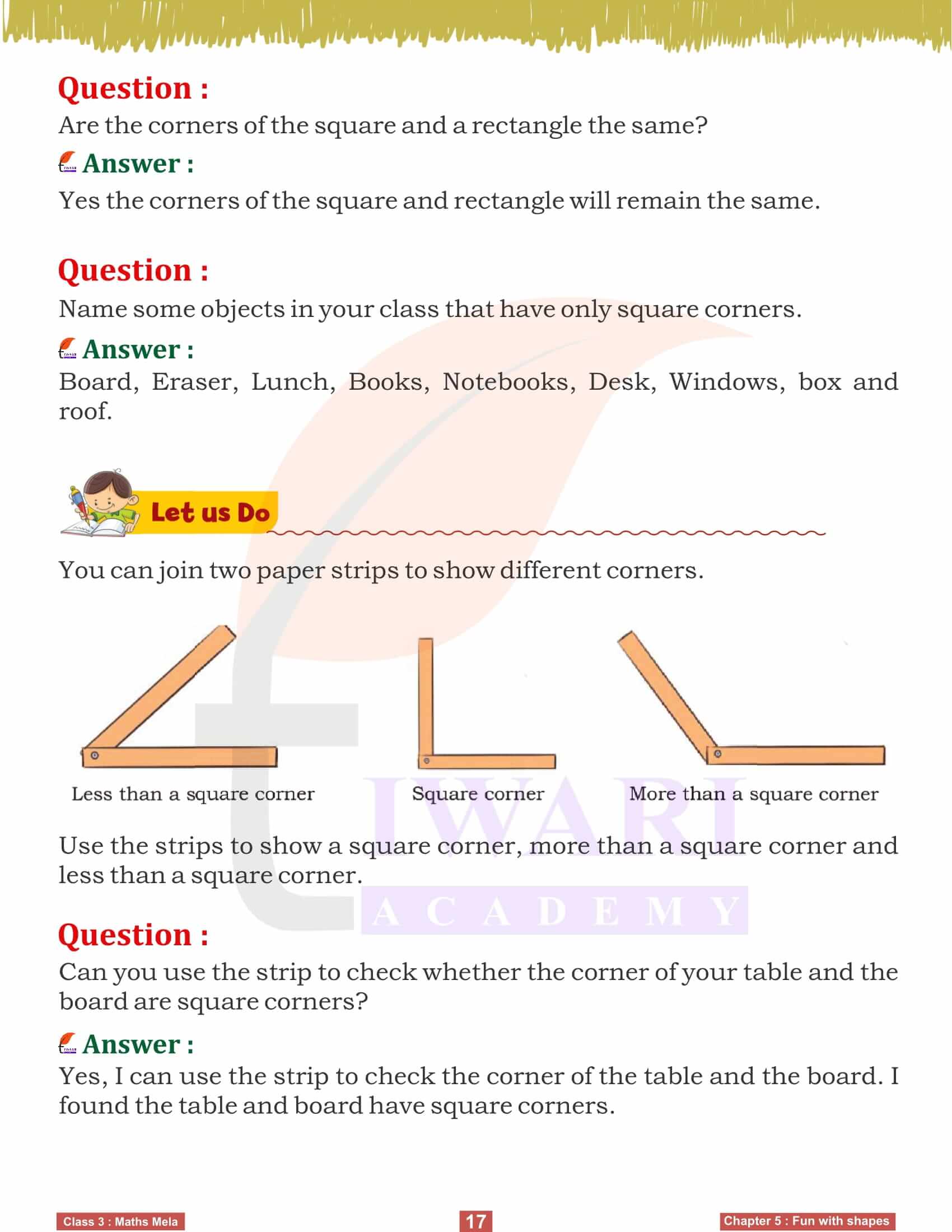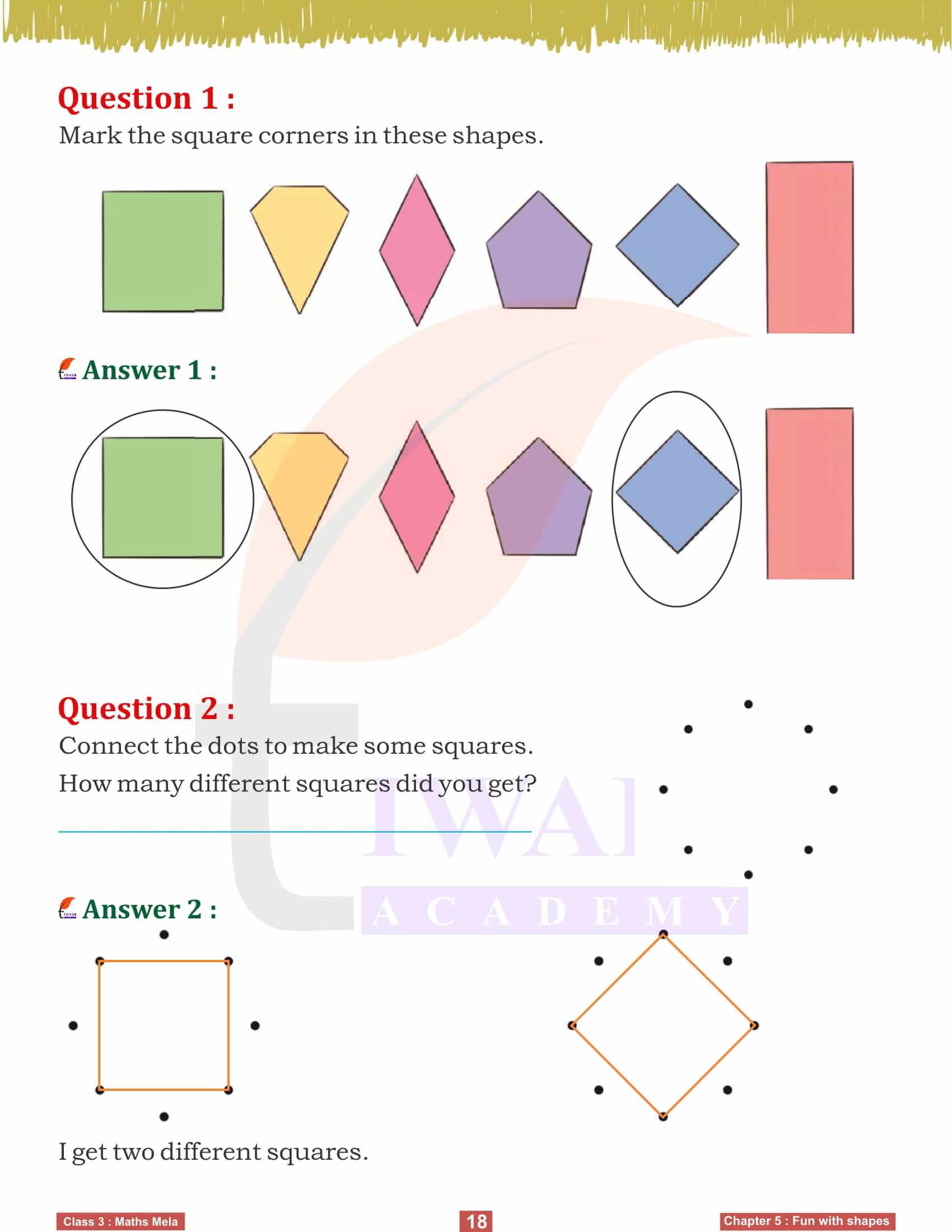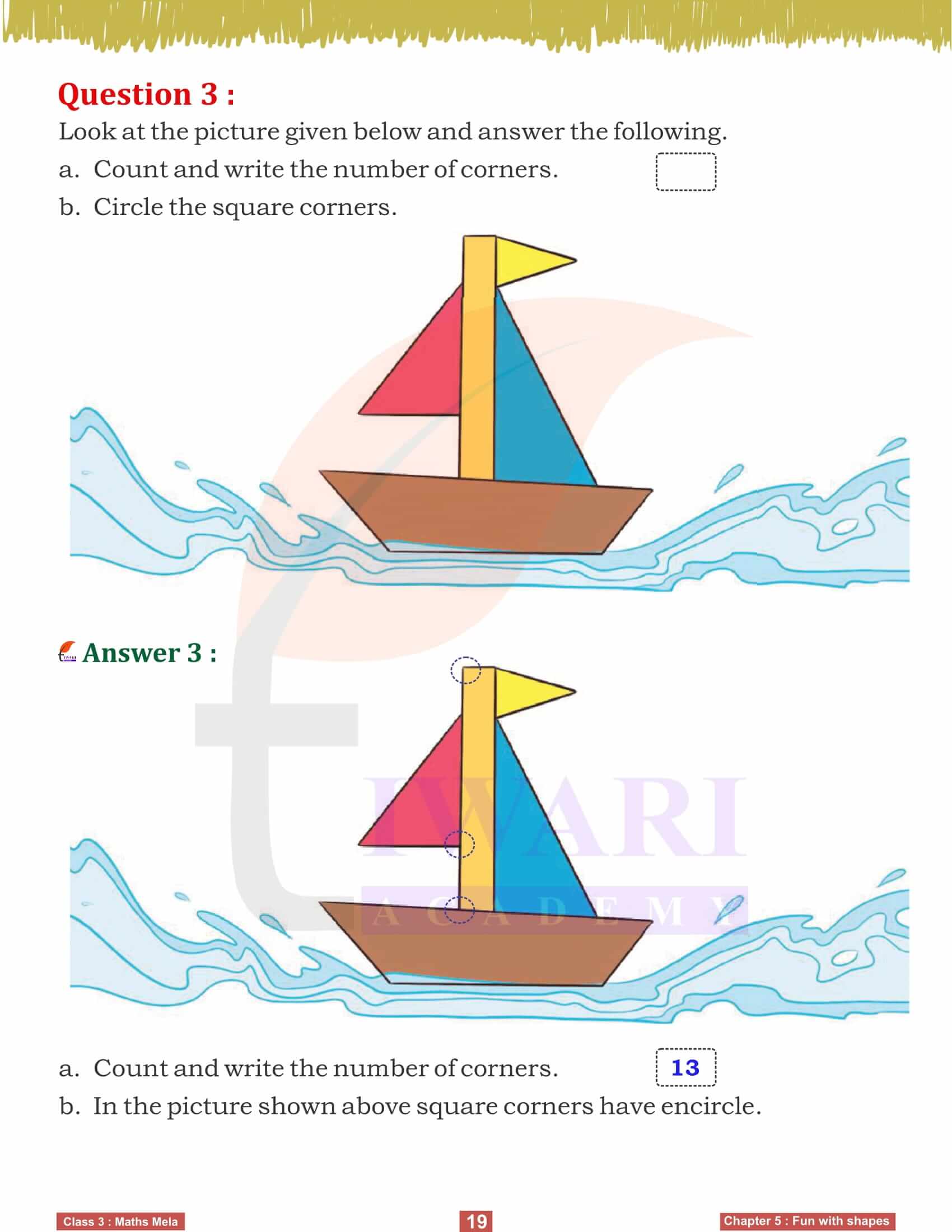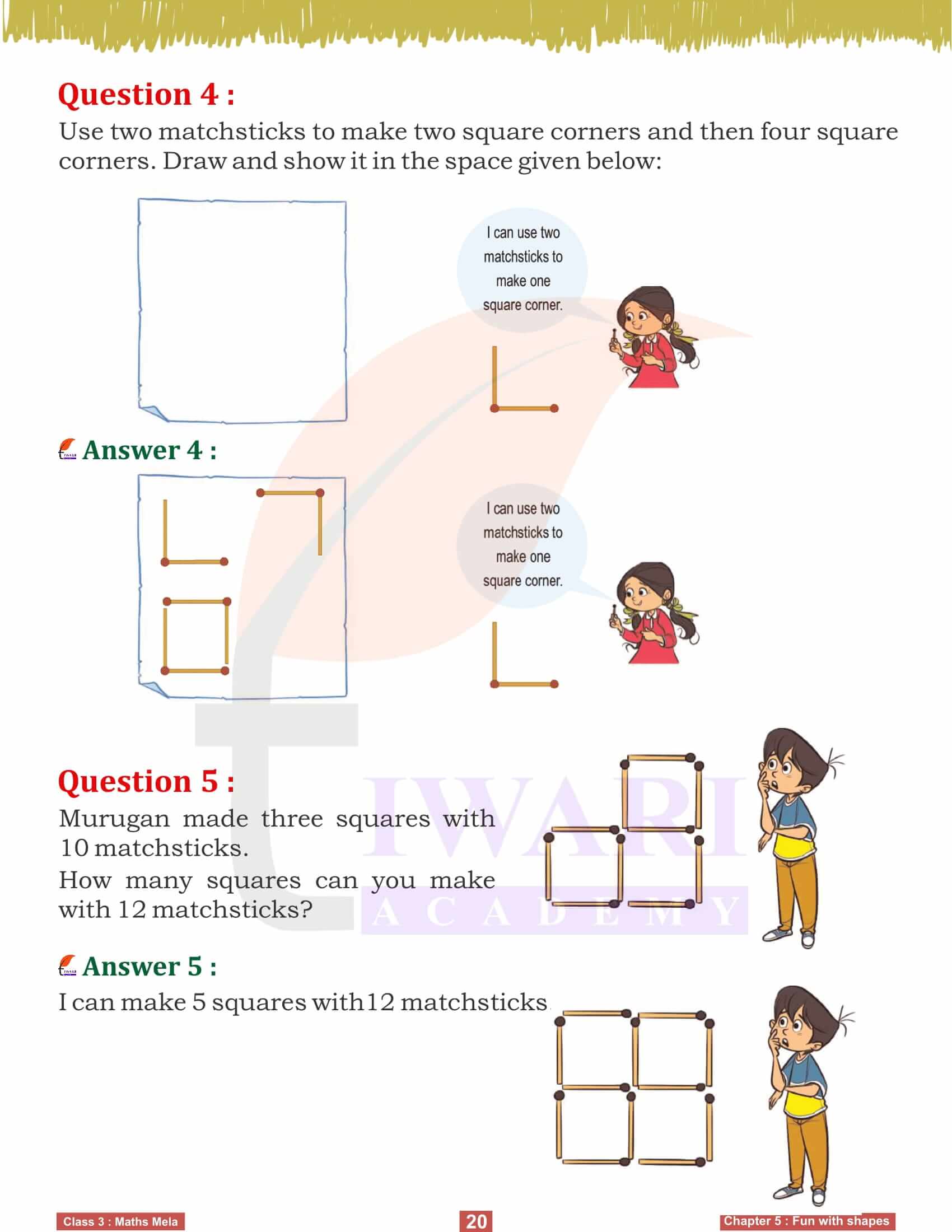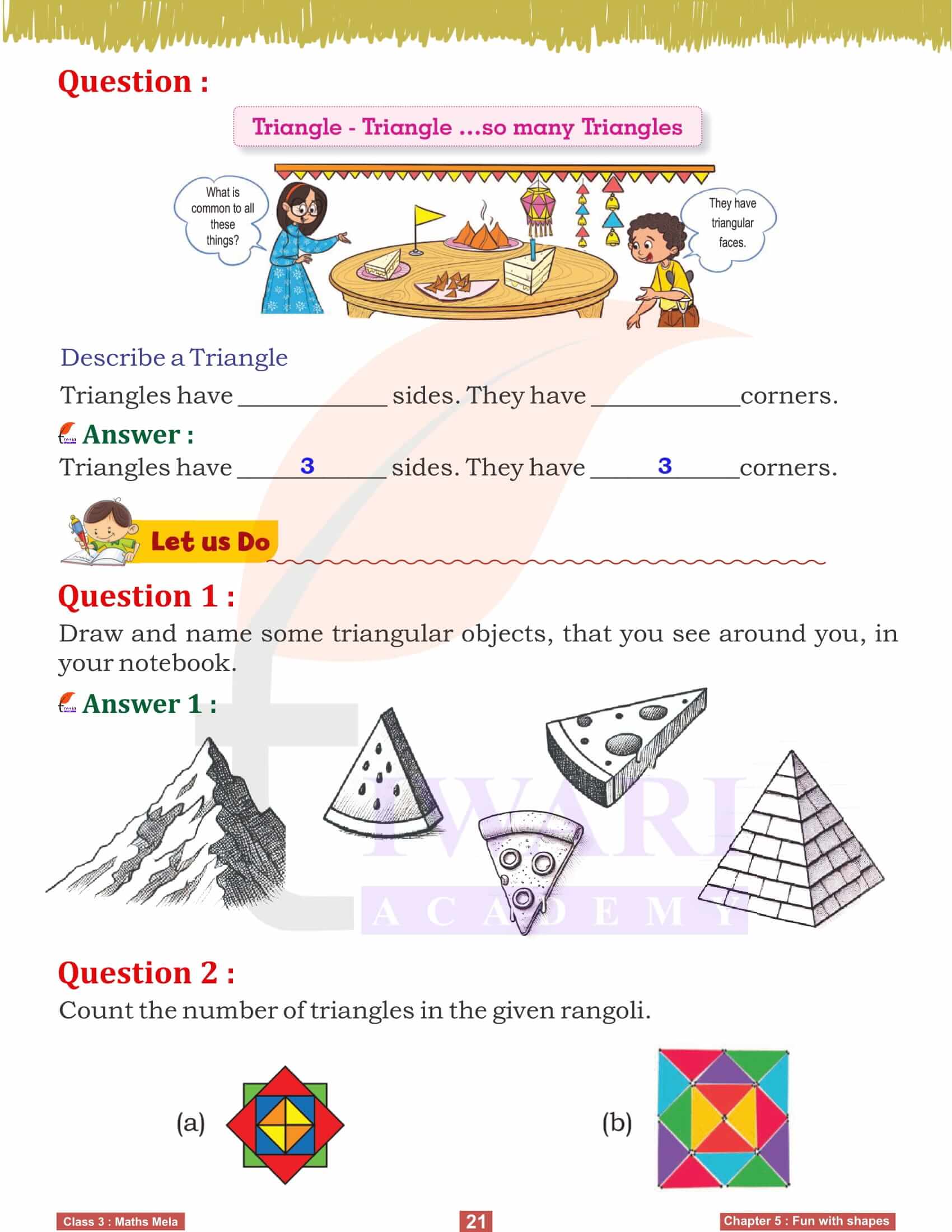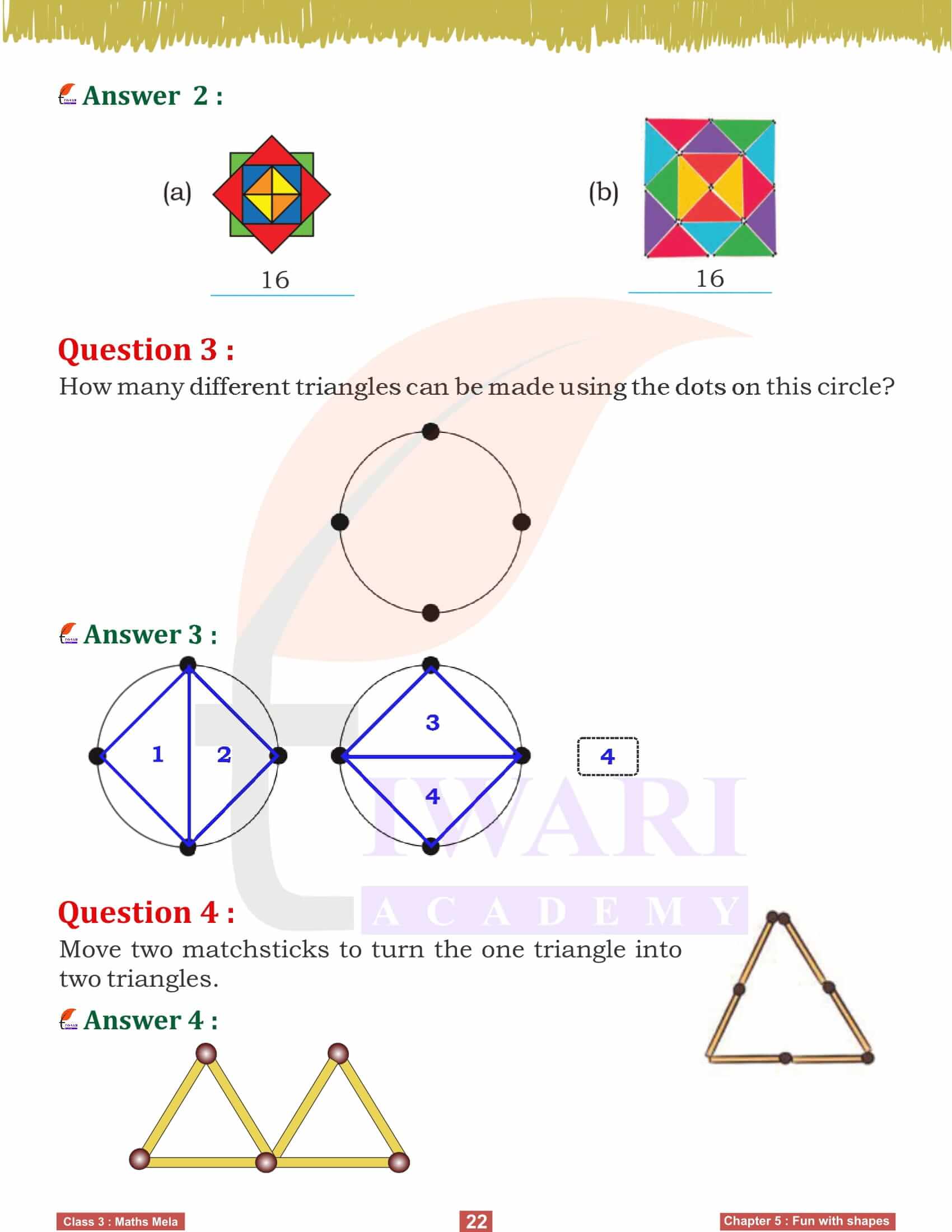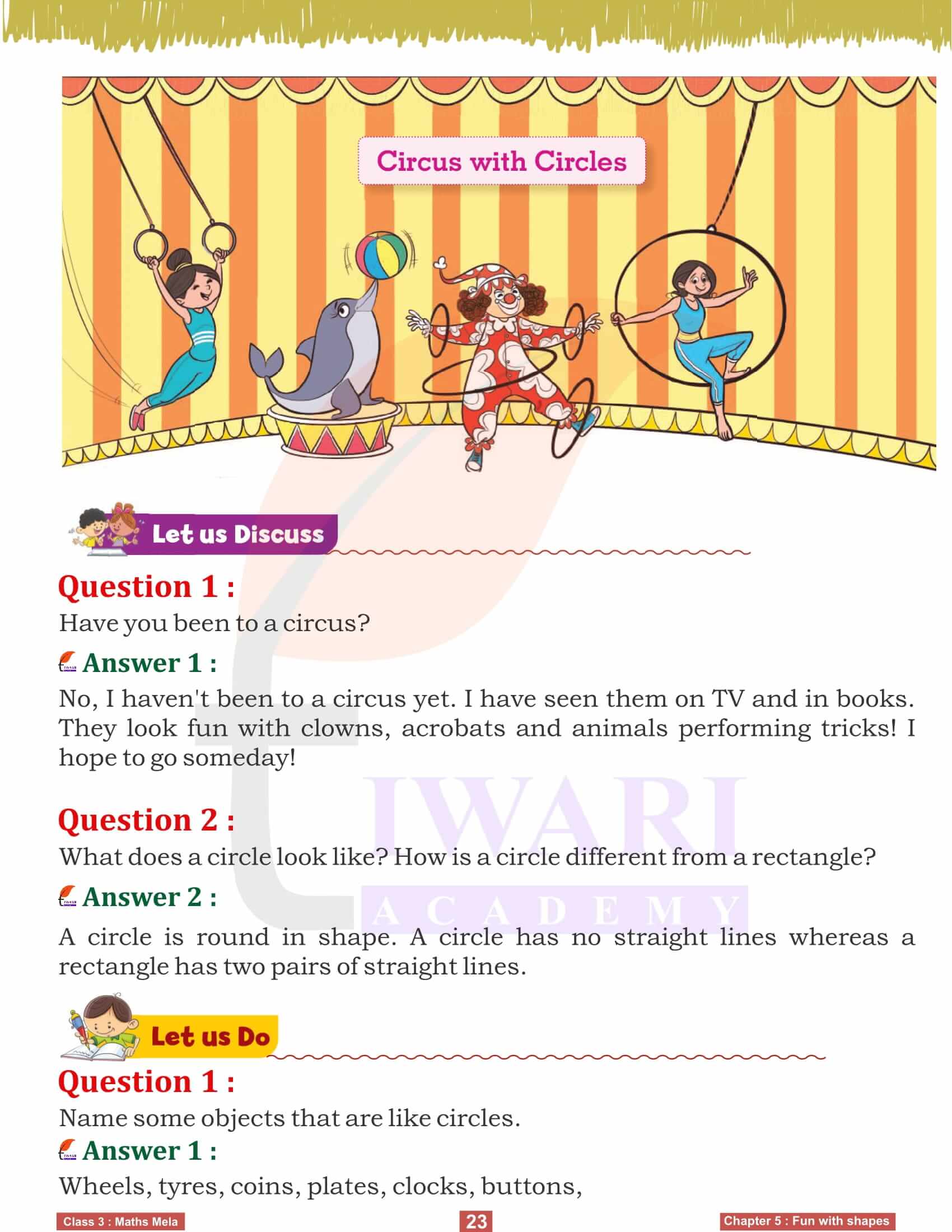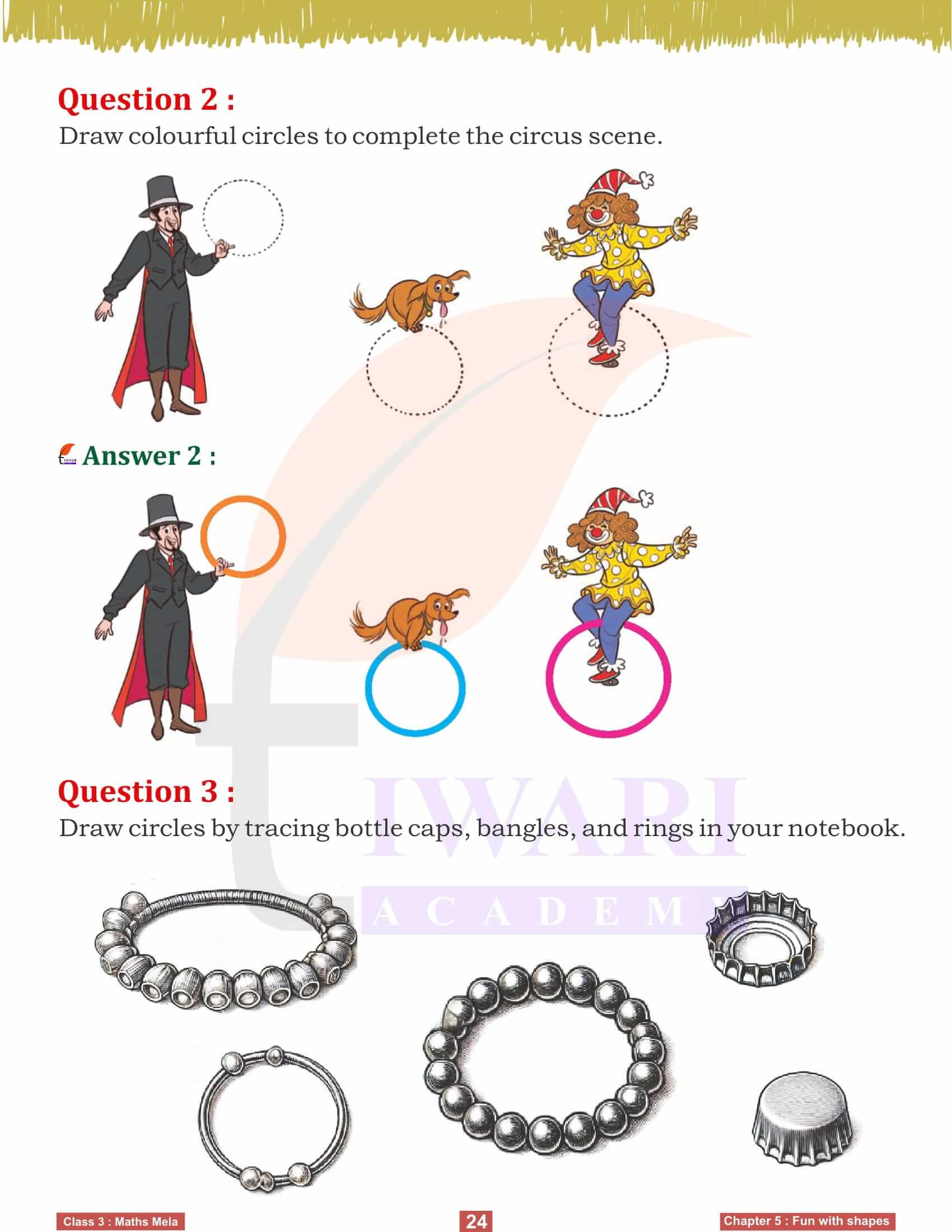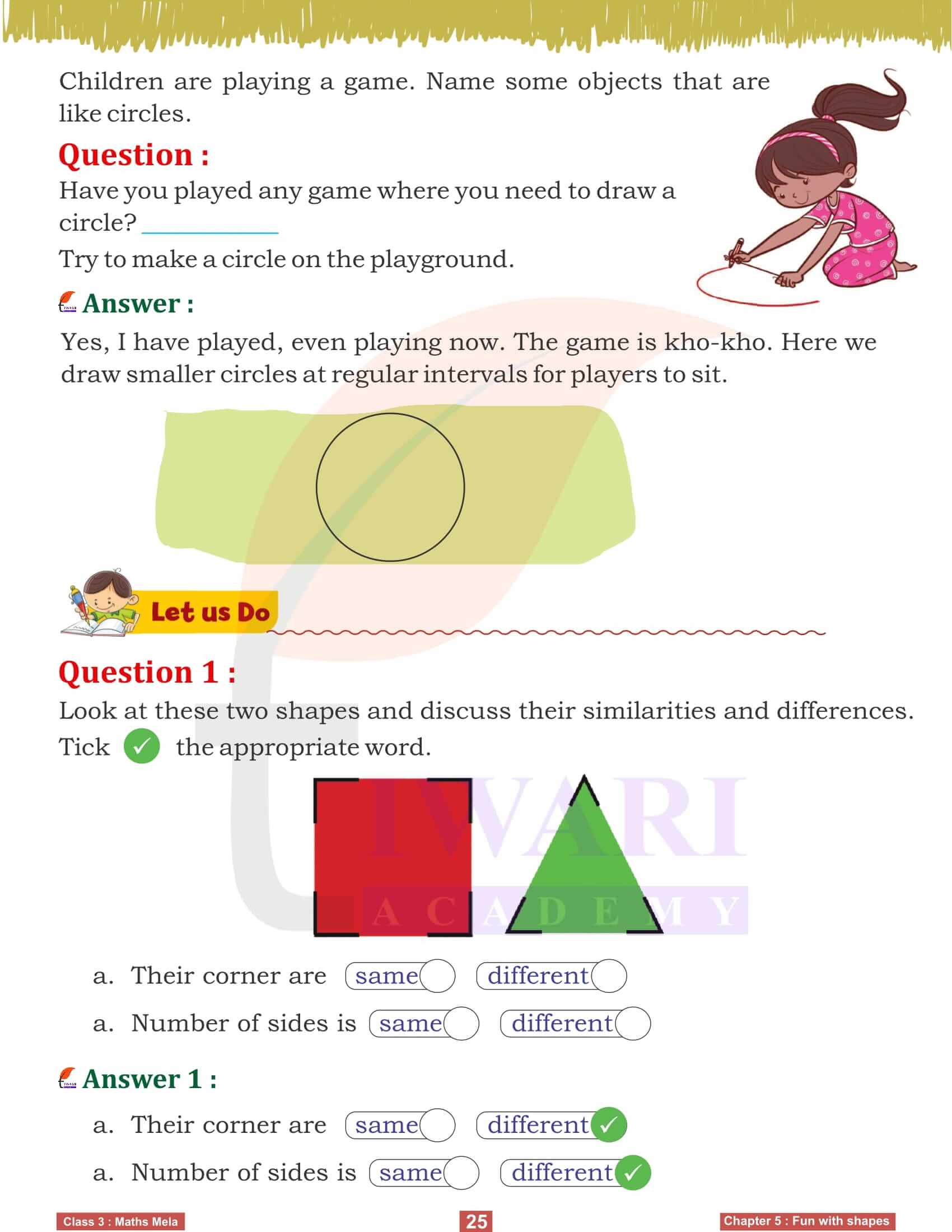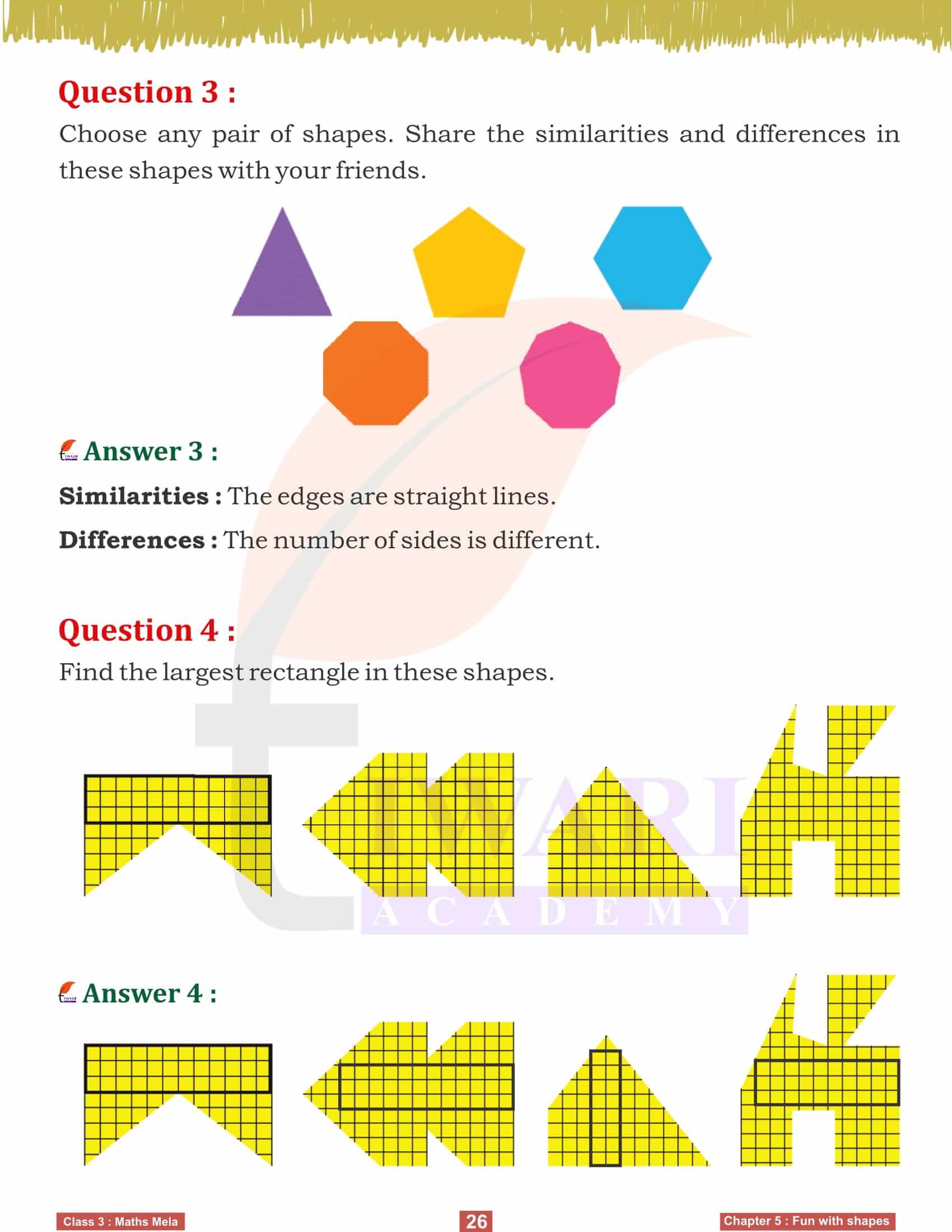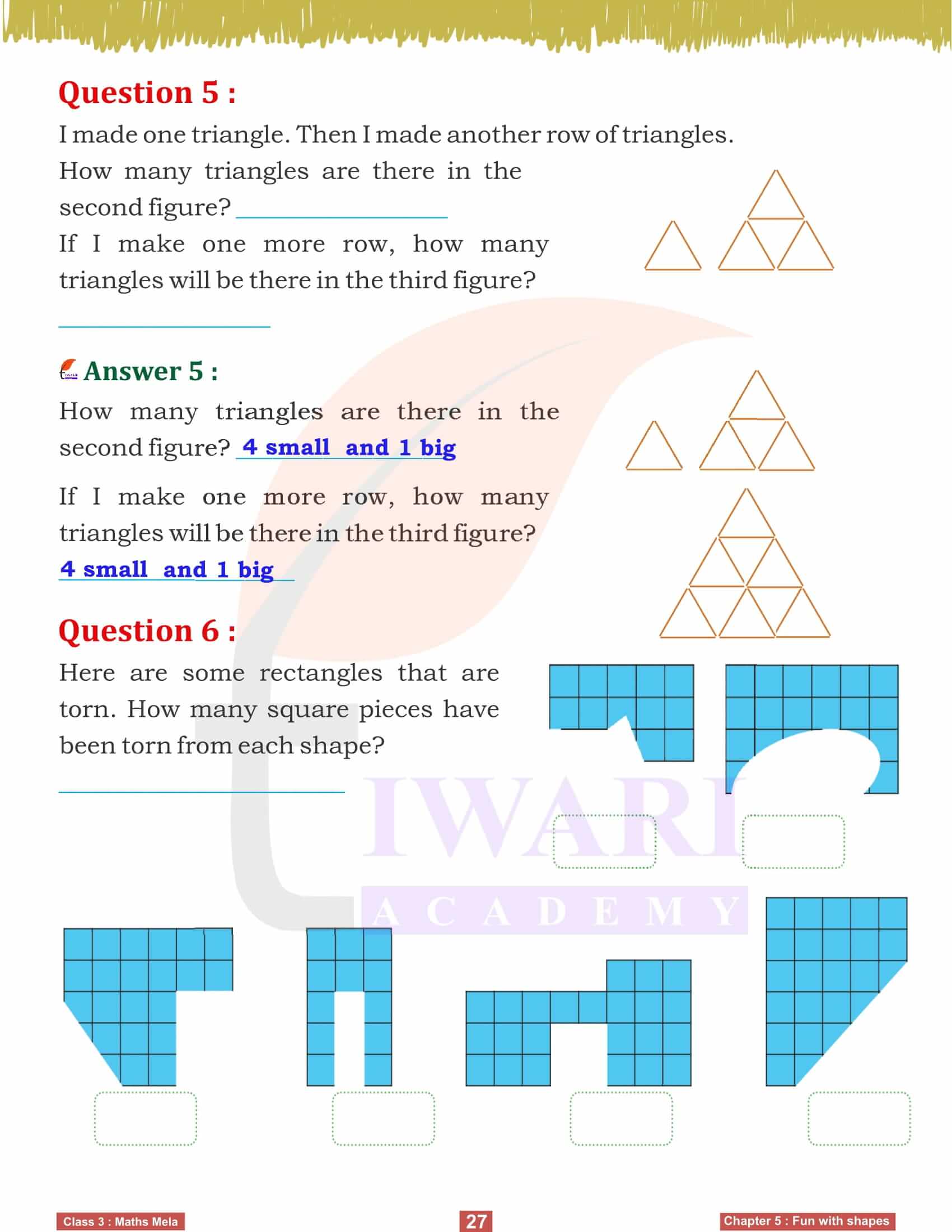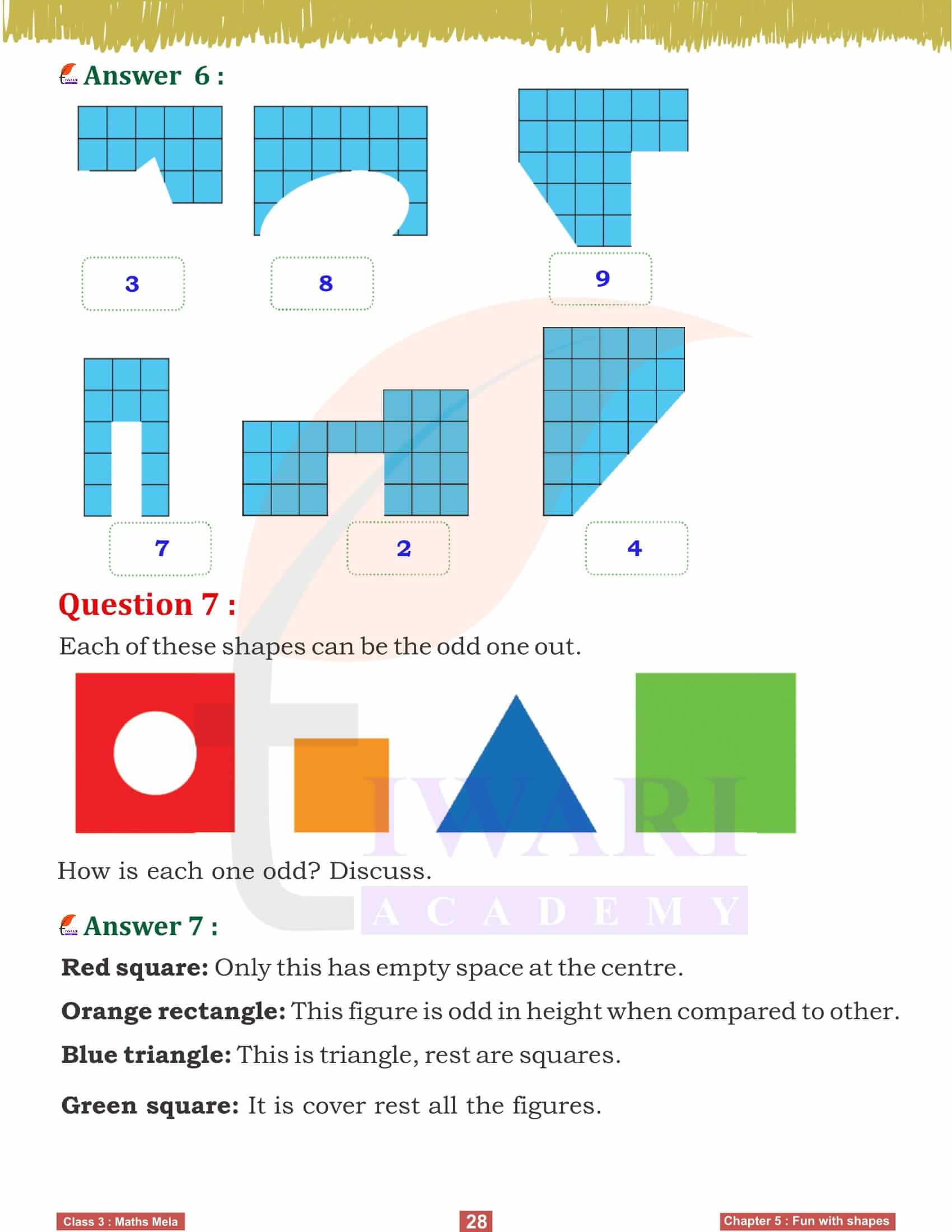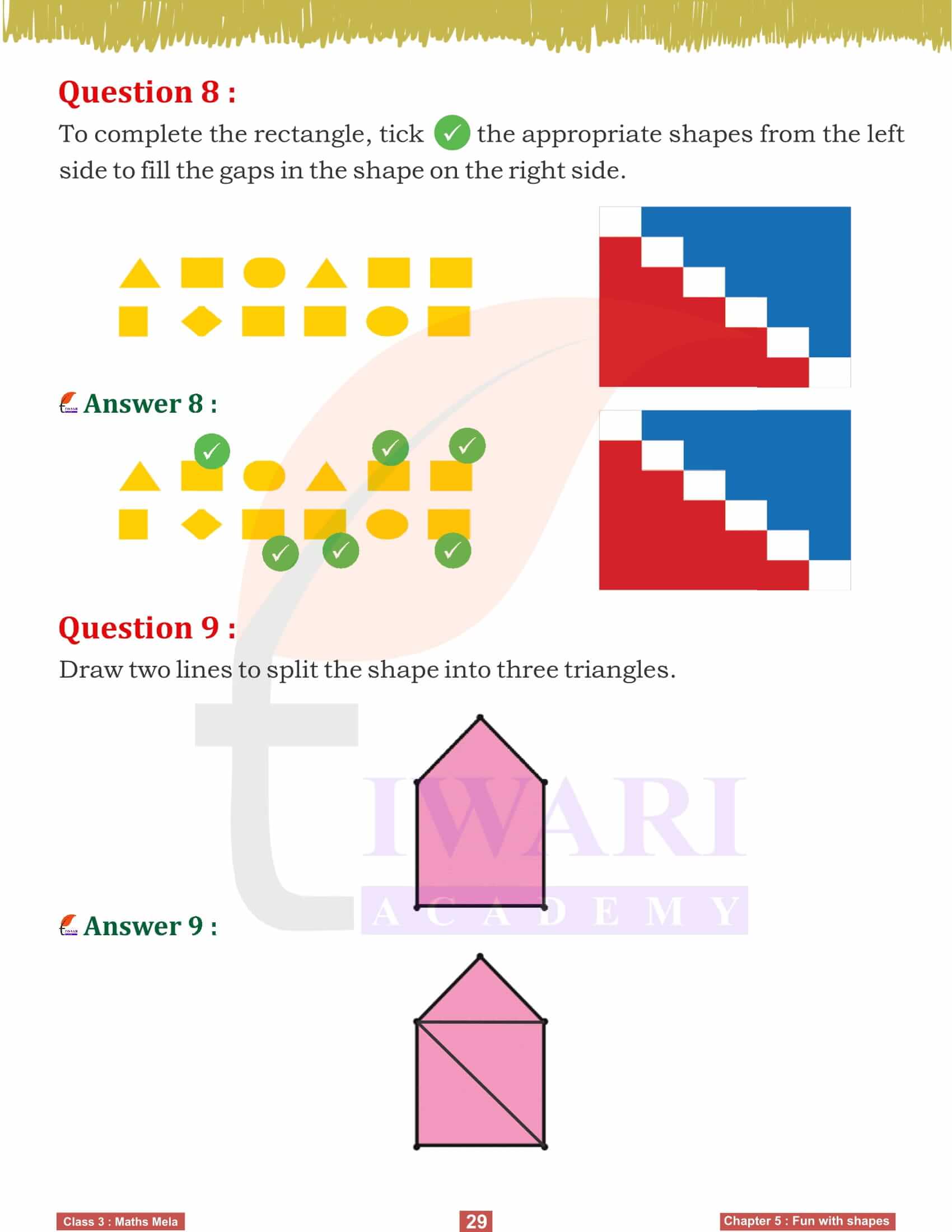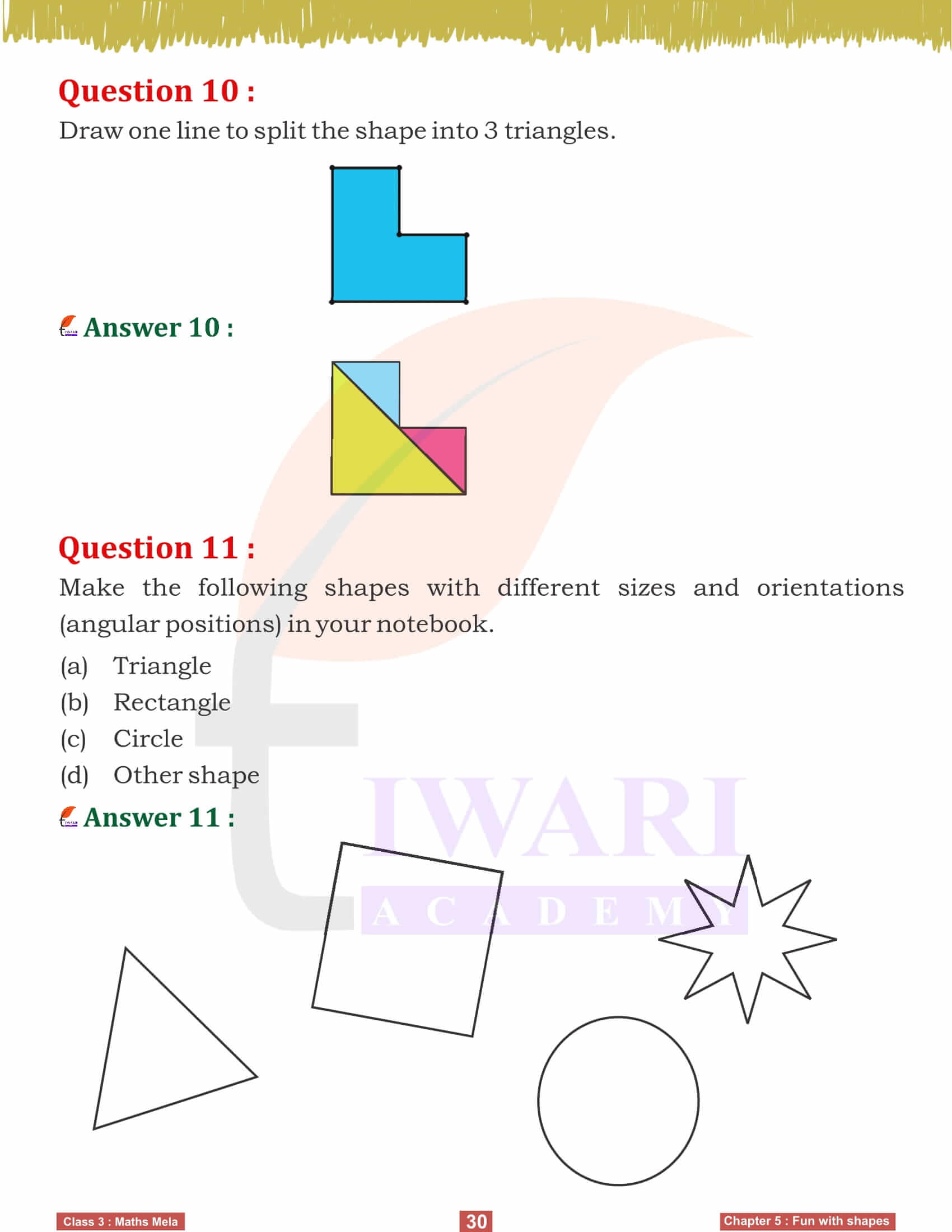NCERT Solutions for Class 3 Maths Mela Chapter 5 Fun with Shapes in Hindi and English Medium revised for session 2025-26. In Chapter 5, students dive into the world of geometry, exploring various shapes and their properties. They learn to identify, compare and draw basic shapes such as circles, squares, triangles and rectangles. Through hands-on activities like shape puzzles and drawing exercises, students develop spatial awareness and a solid foundation in geometry.
Study Schedule for Class 3 Maths
Chapter 5 Fun with Shapes Introduction
Class 3 Maths Chapter 5, Fun with Shapes, introduces students to the fascinating world of geometric shapes. This chapter aims to build a foundational understanding of different shapes and their properties. Through a series of engaging activities, students will explore various geometric figures, such as triangles, rectangles, squares, and circles. The chapter is designed to make learning about shapes an enjoyable experience, incorporating hands-on tasks that encourage creativity and critical thinking. By the end of this chapter, students will have a strong grasp of basic geometric concepts and be able to identify and describe different shapes confidently.
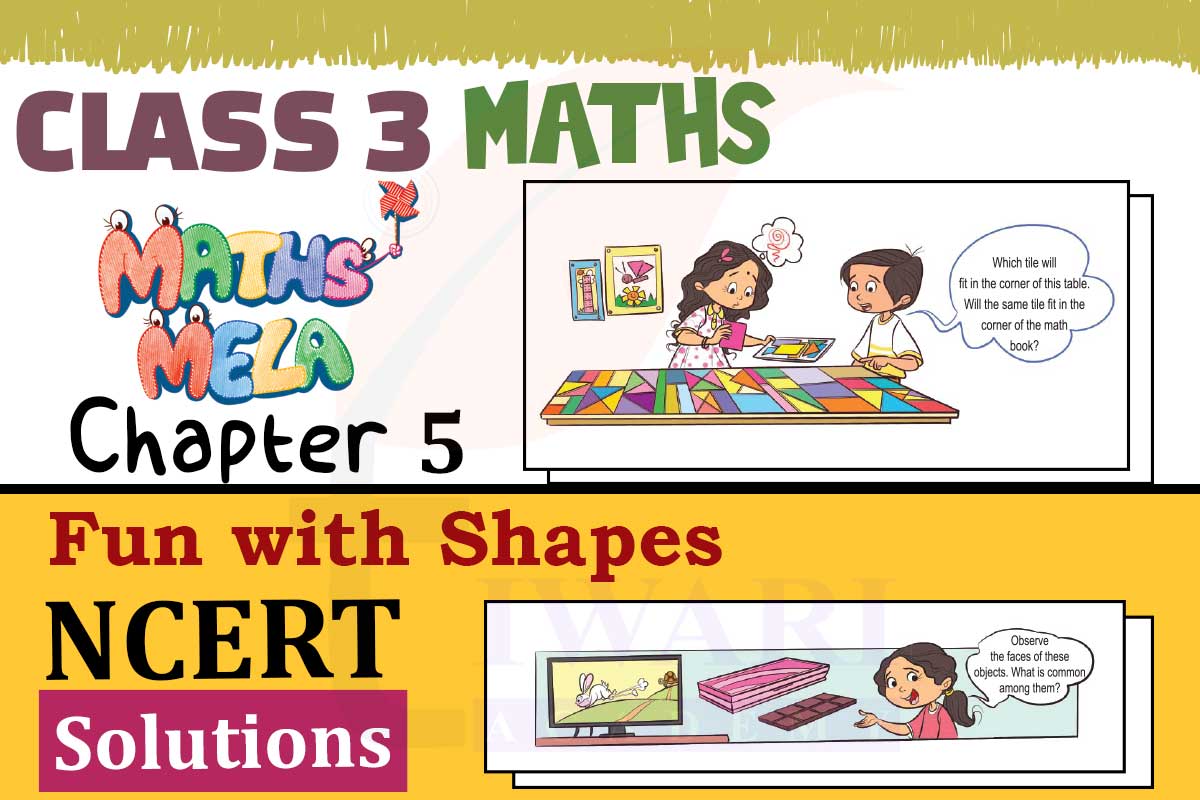
Exploring Rangoli Patterns
The chapter 5 begins with an exciting activity involving rangoli patterns. Students are asked to recreate a rangoli design using dots provided in the book. This activity not only introduces them to geometric shapes but also highlights the cultural significance of rangoli in Indian traditions. By naming the shapes in the rangoli and counting the number of shapes formed by curved and straight lines, students develop their observational skills and learn to distinguish between different types of lines. This section emphasizes creativity, as students are encouraged to use classroom objects to create their own rangoli designs, fostering an appreciation for art and geometry.
Unfolding Shapes from Everyday Objects
The chapter delves into the exploration of shapes found in everyday objects. Students are guided to collect and carefully open cardboard boxes to observe the shapes that emerge when flattened. This hands-on activity helps them understand the concept of faces, edges, and vertices of three-dimensional shapes. Additionally, making an envelope from a square piece of paper introduces them to practical applications of geometry. Teachers are encouraged to let students create various geometric shapes using paper, cylinders, cones, and cubes, enhancing their spatial awareness and understanding of how shapes form the basis of many objects around them.
Understanding Rectangles and Squares
In the chapter 5, students focus on the characteristics of rectangles and squares. Through a series of activities, they learn to identify rectangles by counting sides and corners, understanding the concept of right angles, and recognizing equal sides. Using matchsticks to create squares and tracing faces of cuboidal objects further solidifies their comprehension of these shapes. Students are also prompted to explore the relationship between squares and rectangles, observing similarities and differences. This comparative approach helps them develop a deeper understanding of geometric properties and improves their ability to classify shapes accurately.
Discovering Triangles
Triangles take the spotlight as students are introduced to different types of triangles and their properties. Activities include drawing and naming triangular objects seen in daily life, counting triangles in rangoli patterns, and creating triangles using matchsticks. By engaging in paper folding and cutting exercises, students can visualize and create various types of triangles, enhancing their understanding of sides and angles. This section aims to make students comfortable with identifying and working with triangles, fostering a strong foundation for more complex geometric concepts they will encounter in higher grades.
Playing with Circles
The chapter 5 concludes with an exploration of circles. Students are encouraged to identify circular objects in their environment and draw circles using various tools like bottle caps and bangles. Through activities like making puppets with circular shapes and playing games that involve drawing circles, students learn about the unique properties of circles, such as having no corners or edges. This section also emphasizes the importance of the center and radius in defining a circle. By the end of this chapter, students will be adept at recognizing and drawing circles and understanding their significance in both everyday life and mathematical contexts.
Related Links
